
cardinale-chris-carpenter-1
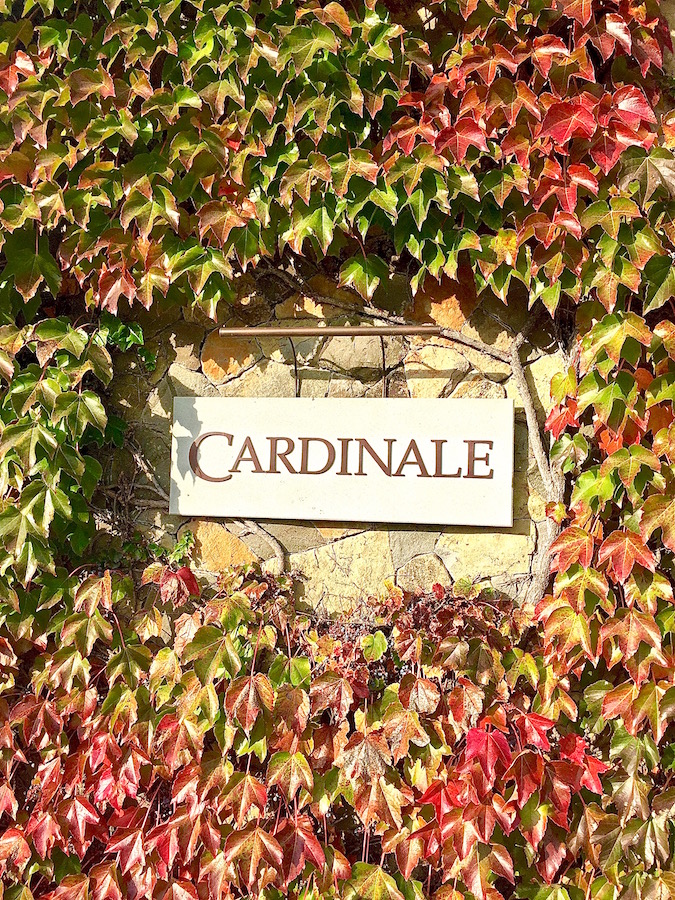
cardinale-stone-sign-fall-leaves
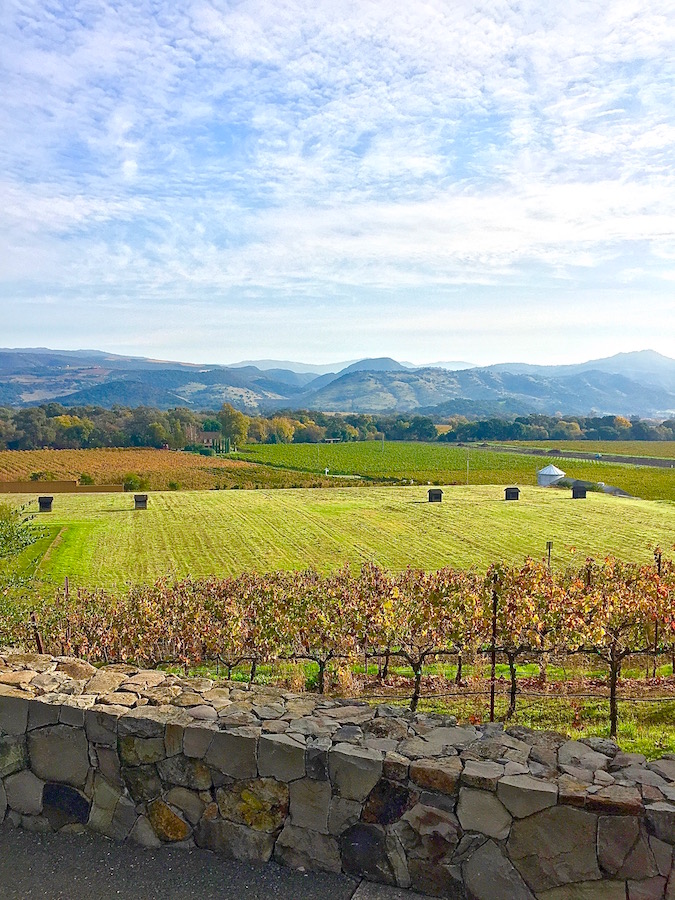
cardinale-vineyard-view
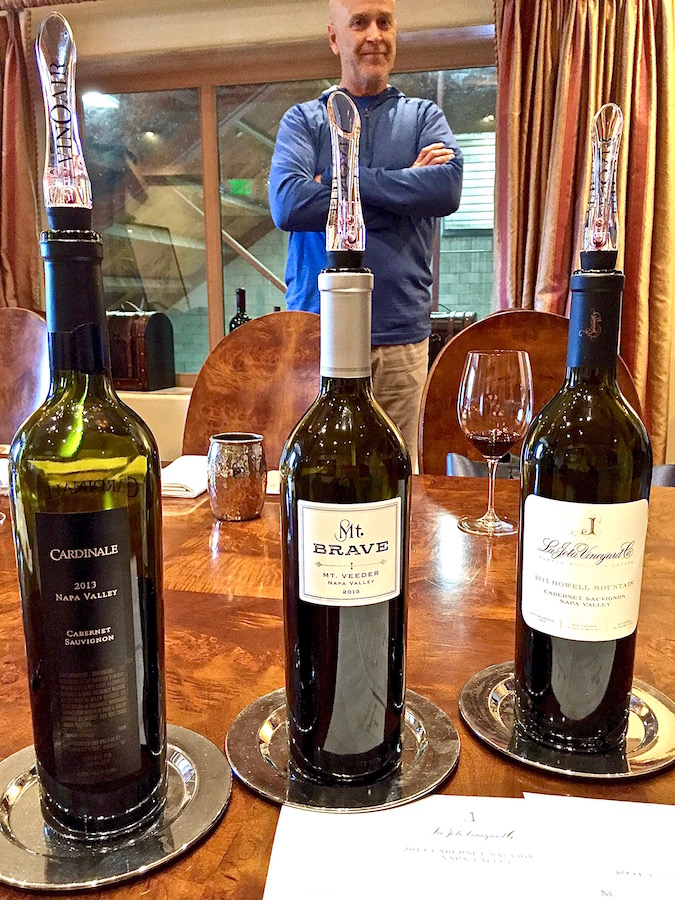
cardinale-three-bottle-jim
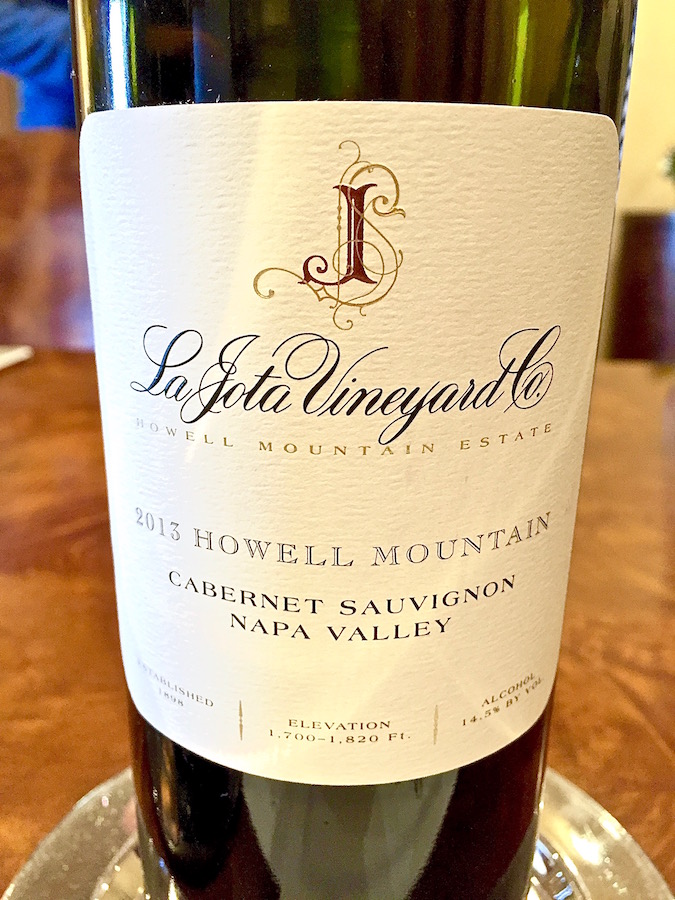
cardinale-la-jota-2013-bottle-shot
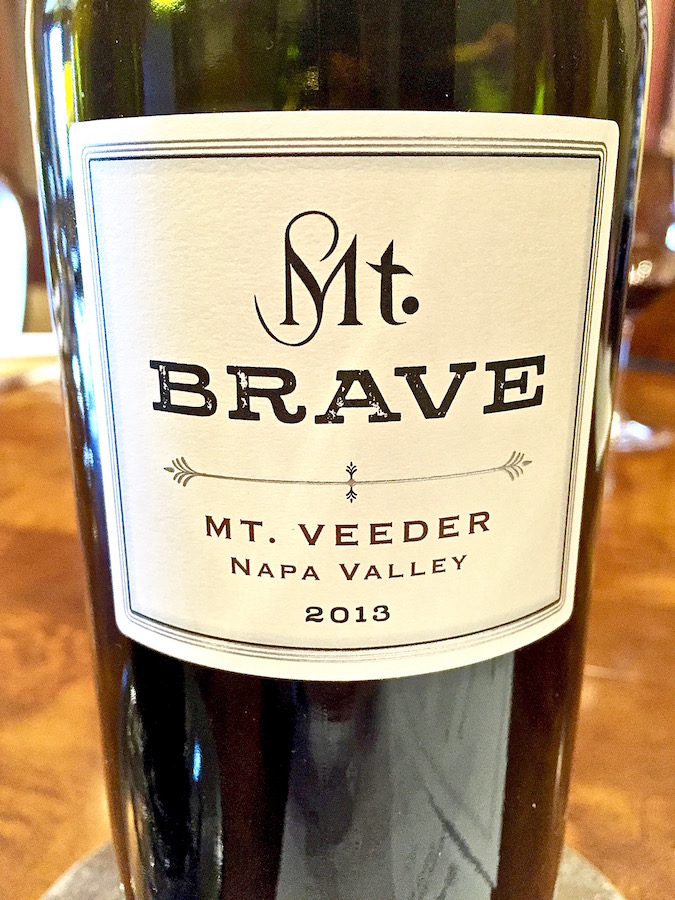
cardinale-mt-brave-2013-bottle-shot

cardinale-2013-bottle-shot

cardinale-miskews-mehalsos
Bartender. Pre-med student. MBA recipient. Medical device salesman. Chris Carpenter is a man who's worn many hats over the years. His most noteworthy, however, is perhaps the one he's been wearing for the past twenty: Winemaker for Jackson Family Wines' esteemed Lokoya, Cardinale, Mt. Brave,La Jota and Hickinbotham labels.So just how does a Biology major from the University of Illinois become one of Napa Valley's most well-respected winemakers making some of its most highly acclaimed wines? While studying at Illinois, Carpenter worked at Butch McGuire's, an iconic Irish pub in Chicago, where he developed an affinity for the restaurant industry. He eventually discovered a passion for food and wine and ultimately decided to pursue a career that would marry his science background with his love of hospitality. Making wine allowed him the perfect opportunity to combine both.In 1998 Carpenter received his MS in Horticulture from the University of California, Davis and, in the same year, joined Jackson Family Wines. Since then, he has become an expert on the mountain appellations of the Napa Valley. From Mt. Veeder to Howell Mountain, he is intimately acquainted with the subtle nuances each has to offer.Whether he's making site specific wines which reflect unique mountain terroirs, or orchestrating vinous symphonies which marry a variety of sites, Carpenter has garnered much praise over the years from consumers and critics alike. During a recent visit to Napa Valley, we were fortunate to sit down with him and taste through a selection of his 2013 offerings.On a crisp, sunny Fall morning, we met Carpenter at the Jackson family's Cardinale winery, located in the heart of Napa's Oakville district. The smell of fermenting grapes perfumed the air as we proceeded up the long, winding driveway to the winery. The building's rustic, stone architecture beautifully complements its surroundings which features sweeping, panoramic views of the Napa Valley.At about 6'5" tall, Chris Carpenter is not easy to miss. A ruggedly handsome blend of Paul Bunyan and Tom Selleck, circa his Magnum PI days, he arrived straight from the vineyard, walkie talkie in hand and fingers stained a deep, inky purple. His team was just pressing the last of 2016's harvest which he emphatically declared, "an outstanding vintage from a flavor and tannin standpoint."True to his love of hospitality, it was soon evident Carpenter is as passionate about sharing his wines as he is about making them. During our visit, we tasted the La Jota Howell Mountain Cabernet Sauvignon, Mt. Brave Mt. VeederCabernet Sauvignon and Cardinale, all from the 2013 vintage, "a near perfect year" by Carpenter's standards. Prior to tasting, he passionately explained his personal approach to winemaking, which consists of three essential elements:"First, you absolutely have to make wines about place. We've broken up this valley into 16 smaller appellations...and each has their unique flavor profile or character relative to one another," Carpenter reflected. "As a winemaker, my job is to preserve that character so that when you're tasting you can get a sense of the diversity.""Second, the wine absolutely has to be made in the vineyard first." He continued, "By that, I mean the raw product ultimately drives the finished product. If you don't make the grapes as great as possible, you'll never make great wine."Which led to Carpenter's third tenet, "If I've done everything in the vineyard that I can, then when it comes to the winery, I can keep it as simple as possible. I preserve the characteristic of the grape versus my winemaking which can mess with the character of the grape."We began with the 2013 La Jota Cabernet Sauvignon ($85) crafted from fruit grown in the historic La Jota and W.S. Keyes Vineyards on Howell Mountain. Established in 1898 by Fredric Hess, the winery was named for its location on the Mexican parcel, Rancho La Jota. Carpenter described this wine as, "our most Bordeaux-like appellation, due to the region's wetter, cooler climate which is influenced by the nearby San Pablo Bay."This Bordeaux-style blend contains all five Bordeaux varieties, 75% Cabernet Sauvignon, 10.5% Merlot, 8% Cabernet Franc, 4.5% Petit Verdot and 2%Malbec. Following fermentation using only native yeasts, the wine underwent malolactic fermentation to soften its acidity and was then aged for 19 month in French oak barrels (89% new). The end result is a wine with an inky purplish hue and enticing aromas of black fruit, licorice and spice. On the palate, mouth-filling flavors of blackberry, black currant, licorice, graphite and savory herb accompany a gravelly minerality and food friendly acidity. While this powerful, full-bodied wine will undoubtedly reward over the next 7-10 years, the generous dollop of Merlot also makes it imminently enjoyable now.Next, was the 2013 Mt. Brave Mt. Veeder Cabernet Sauvignon ($75) which sources grapes from the eponymous Mt. Brave vineyard located high atop Mt. Veeder in the western Napa Valley. The vines grow at an elevation of 1,400-1,800 feet where the thin, rocky soils and steep slopes present constant issues with water retention and soil erosion. This unique terroir, however, creates small, concentrated berries which produce wines of great concentration and complexity.The 2013 Mt. Brave is a blend of 82% Cabernet Sauvignon, 7% Merlot, 6.5% Malbec and 4.5% Cabernet Franc aged for 19 months in French oak (80% new), then bottled unfinedandunfiltered. The resulting wine is bold and powerful with a gorgeous deep, opaque purple color with fragrant aromas of ripe black fruit, violet and spice. On the palate, lush notes of ripe black currant, black raspberry, roasted plum, cassis and licorice accompany brooding tannins and a lengthy spice-tinged finish. A few years in the cellar, or some aeration either using a decanter or a Vinturi (which Carpenter dubbed, "the best gadget ever!"), will nicely soften this wine's youthful intensity.We finished our tasting with Carpenter's sublime 2013 Cardinale Cabernet Sauvignon ($275), historically a blend of only two grapes, Cabernet Sauvignon (86%) and Merlot (14%). While the previous wines have reflected specific mountain sites, Cardinale is an expression of Napa Valley as a whole, layering both mountain and valley floor fruit to ultimately create a wine of great complexity.Vintage also plays an important role in making Cardinale, "In different vintages, different areas in Napa will perform differently, so one year [Cardinale] might be defined by a greater percentage of Mt. Veeder, and the next year it might be defined by Stag's Leap." As a result, Carpenter describes Cardinale as, "The most right-brained wine I make because I have to think in very creative terms. I have to think of the wines as pieces of an orchestra...each section has a very specific role in that piece of music. Individually, they don't always make sense but when the composer layers them...they do."The stunning 2013 CardinaleCabernet Sauvignon, comprised of predominantly MountVeeder fruit, features a gorgeous purplish-red color and enchanting aromas of red and black fruit, sweet oak and spice. Opulent layers of black cherry, cassis, leather and mocha unfurl on the palate as the wine's rich, silky texture gives way to a long, lingering finish. This sumptuous, sensory symphony beautifully transmutes the Napa Valley's signature aromas, flavors and textures and this exquisitely balanced wine will continue to evolve over the next 15-20 years.For more information on Chris Carpenter's exceptional wines, please check out the following links: La Jota Vineyards, Mt. Brave Wines, and Cardinale Winery.Cheers,
Bartender. Pre-med student. MBA recipient. Medical device salesman. Chris Carpenter is a man who’s worn many hats over the years. His most noteworthy, however, is perhaps the one he’s been wearing for the past twenty: Winemaker for Jackson Family Wines’ esteemed Lokoya, Cardinale, Mt. Brave, La Jota and Hickinbotham labels.
So just how does a Biology major from the University of Illinois become one of Napa Valley’s most well-respected winemakers making some of its most highly acclaimed wines? While studying at Illinois, Carpenter worked at Butch McGuire’s, an iconic Irish pub in Chicago, where he developed an affinity for the restaurant industry. He eventually discovered a passion for food and wine and ultimately decided to pursue a career that would marry his science background with his love of hospitality. Making wine allowed him the perfect opportunity to combine both.

Winemaker Chris Carpenter
In 1998 Carpenter received his MS in Horticulture from the University of California, Davis and, in the same year, joined Jackson Family Wines. Since then, he has become an expert on the mountain appellations of the Napa Valley. From Mt. Veeder to Howell Mountain, he is intimately acquainted with the subtle nuances each has to offer.
Whether he’s making site specific wines which reflect unique mountain terroirs, or orchestrating vinous symphonies which marry a variety of sites, Carpenter has garnered much praise over the years from consumers and critics alike. During a recent visit to Napa Valley, we were fortunate to sit down with him and taste through a selection of his 2013 offerings.


On a crisp, sunny Fall morning, we met Carpenter at the Jackson family’s Cardinale winery, located in the heart of Napa’s Oakville district. The smell of fermenting grapes perfumed the air as we proceeded up the long, winding driveway to the winery. The building’s rustic, stone architecture beautifully complements its surroundings which features sweeping, panoramic views of the Napa Valley.
At about 6’5″ tall, Chris Carpenter is not easy to miss. A ruggedly handsome blend of Paul Bunyan and Tom Selleck, circa his Magnum PI days, he arrived straight from the vineyard, walkie talkie in hand and fingers stained a deep, inky purple. His team was just pressing the last of 2016’s harvest which he emphatically declared, “an outstanding vintage from a flavor and tannin standpoint.”
True to his love of hospitality, it was soon evident Carpenter is as passionate about sharing his wines as he is about making them. During our visit, we tasted the La Jota Howell Mountain Cabernet Sauvignon, Mt. Brave Mt. Veeder Cabernet Sauvignon and Cardinale, all from the 2013 vintage, “a near perfect year” by Carpenter’s standards. Prior to tasting, he passionately explained his personal approach to winemaking, which consists of three essential elements:

“First, you absolutely have to make wines about place. We’ve broken up this valley into 16 smaller appellations…and each has their unique flavor profile or character relative to one another,” Carpenter reflected. “As a winemaker, my job is to preserve that character so that when you’re tasting you can get a sense of the diversity.”
“Second, the wine absolutely has to be made in the vineyard first.” He continued, “By that, I mean the raw product ultimately drives the finished product. If you don’t make the grapes as great as possible, you’ll never make great wine.”
Which led to Carpenter’s third tenet, “If I’ve done everything in the vineyard that I can, then when it comes to the winery, I can keep it as simple as possible. I preserve the characteristic of the grape versus my winemaking which can mess with the character of the grape.”

We began with the 2013 La Jota Cabernet Sauvignon ($85) crafted from fruit grown in the historic La Jota and W.S. Keyes Vineyards on Howell Mountain. Established in 1898 by Fredric Hess, the winery was named for its location on the Mexican parcel, Rancho La Jota. Carpenter described this wine as, “our most Bordeaux-like appellation, due to the region’s wetter, cooler climate which is influenced by the nearby San Pablo Bay.”
This Bordeaux-style blend contains all five Bordeaux varieties, 75% Cabernet Sauvignon, 10.5% Merlot, 8% Cabernet Franc, 4.5% Petit Verdot and 2% Malbec. Following fermentation using only native yeasts, the wine underwent malolactic fermentation to soften its acidity and was then aged for 19 month in French oak barrels (89% new). The end result is a wine with an inky purplish hue and enticing aromas of black fruit, licorice and spice. On the palate, mouth-filling flavors of blackberry, black currant, licorice, graphite and savory herb accompany a gravelly minerality and food friendly acidity. While this powerful, full-bodied wine will undoubtedly reward over the next 7-10 years, the generous dollop of Merlot also makes it imminently enjoyable now.

Next, was the 2013 Mt. Brave Mt. Veeder Cabernet Sauvignon ($75) which sources grapes from the eponymous Mt. Brave vineyard located high atop Mt. Veeder in the western Napa Valley. The vines grow at an elevation of 1,400-1,800 feet where the thin, rocky soils and steep slopes present constant issues with water retention and soil erosion. This unique terroir, however, creates small, concentrated berries which produce wines of great concentration and complexity.
The 2013 Mt. Brave is a blend of 82% Cabernet Sauvignon, 7% Merlot, 6.5% Malbec and 4.5% Cabernet Franc aged for 19 months in French oak (80% new), then bottled unfined and unfiltered. The resulting wine is bold and powerful with a gorgeous deep, opaque purple color with fragrant aromas of ripe black fruit, violet and spice. On the palate, lush notes of ripe black currant, black raspberry, roasted plum, cassis and licorice accompany brooding tannins and a lengthy spice-tinged finish. A few years in the cellar, or some aeration either using a decanter or a Vinturi (which Carpenter dubbed, “the best gadget ever!”), will nicely soften this wine’s youthful intensity.

We finished our tasting with Carpenter’s sublime 2013 Cardinale Cabernet Sauvignon ($275), historically a blend of only two grapes, Cabernet Sauvignon (86%) and Merlot (14%). While the previous wines have reflected specific mountain sites, Cardinale is an expression of Napa Valley as a whole, layering both mountain and valley floor fruit to ultimately create a wine of great complexity.
Vintage also plays an important role in making Cardinale, “In different vintages, different areas in Napa will perform differently, so one year [Cardinale] might be defined by a greater percentage of Mt. Veeder, and the next year it might be defined by Stag’s Leap.” As a result, Carpenter describes Cardinale as, “The most right-brained wine I make because I have to think in very creative terms. I have to think of the wines as pieces of an orchestra…each section has a very specific role in that piece of music. Individually, they don’t always make sense but when the composer layers them…they do.”
The stunning 2013 Cardinale Cabernet Sauvignon, comprised of predominantly Mount Veeder fruit, features a gorgeous purplish-red color and enchanting aromas of red and black fruit, sweet oak and spice. Opulent layers of black cherry, cassis, leather and mocha unfurl on the palate as the wine’s rich, silky texture gives way to a long, lingering finish. This sumptuous, sensory symphony beautifully transmutes the Napa Valley’s signature aromas, flavors and textures and this exquisitely balanced wine will continue to evolve over the next 15-20 years.

For more information on Chris Carpenter’s exceptional wines, please check out the following links: La Jota Vineyards, Mt. Brave Wines, and Cardinale Winery.
Cheers,
![]()
The post A Visit with Napa Valley’s Vinous “Mountain Man,” Winemaker Chris Carpenter appeared first on The Glamorous Gourmet.

It is good to have an end to journey toward, but it is the journey that matters in the end.
While this year of COVID has dashed most travel plans for the foreseeable future, it doesn’t mean you can’t plan for the day you can. The Hubs and I have experienced some fabulous food and wine-inspired travels over the years that I write about in my Glamorous Getaways blogs and I thought in this post I’d feature five of my all time faves.
From the charming L'Auberge Carmel in Carmel, California to the pet-friendly Park on Main Hotel in Highlands, North Carolina, grab a glass of wine and have fun planning your itinerary while perusing these inspiring options:
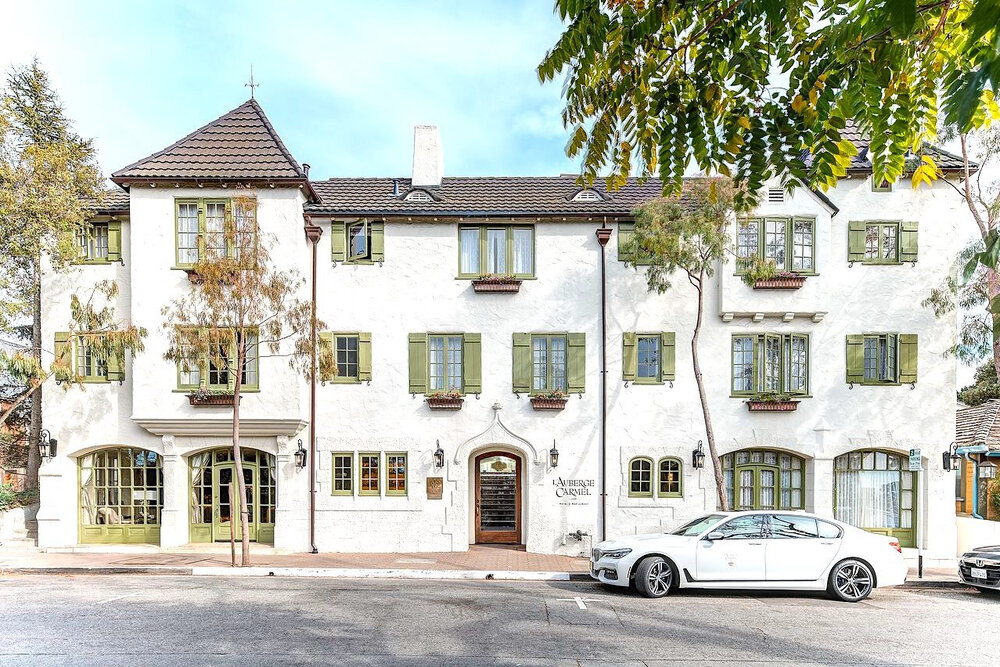
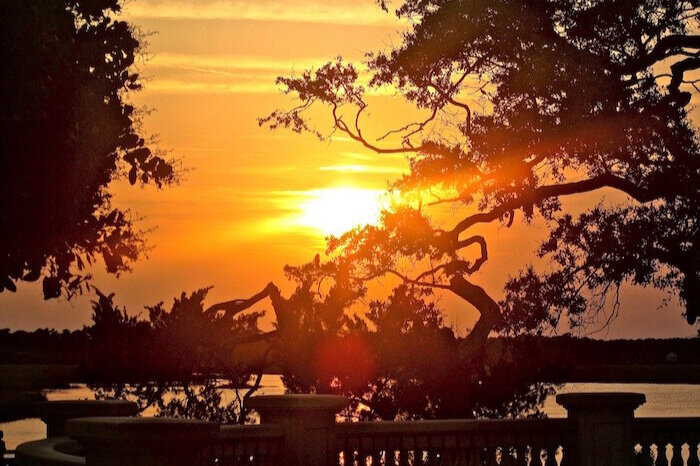

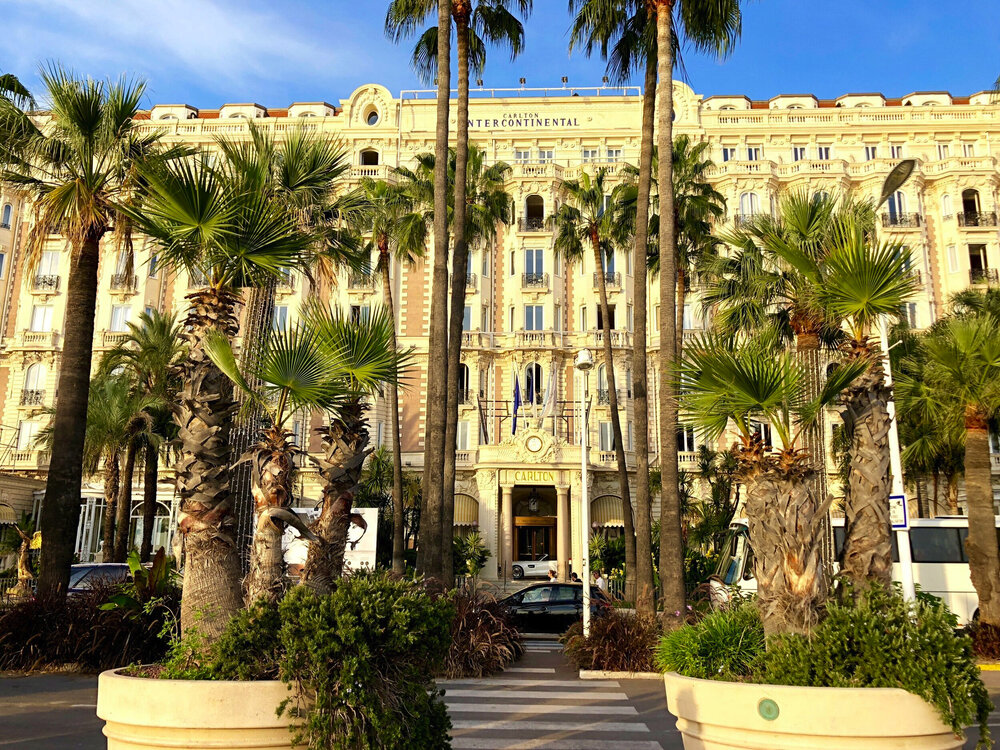

Be sure to send us a virtual postcard by using #GlamorousGetaways on social media! What are some of your favorite food and wine related travel destinations? I'd love to hear about them in the Comments section below.
I truly adore this quote and if one of your New Year’s resolutions is to travel more, you are in luck!
We’ve covered some fabulous getaways over the last couple years, Glamorous Getaways to be exact, that are perfect for food and wine lovers. From the charming L’Auberge Carmel in Carmel, California to the pet-friendly Park on Main Hotel in Highlands, North Carolina, grab a glass of wine and have fun planning your itinerary while perusing these wonderful options:
1.) L’Auberge Carmel – Carmel, California

2.) The Cloister at Sea Island – Sea Island, Georgia

3.) The (Pet-friendly) Park on Main – Highlands, North Carolina

4.) The Epicurean Hotel – Tampa, Florida

5.) The Inn on Fifth – Naples, Florida

Be sure to send us a virtual postcard by using #Glamorous Getaways on social media! What are some of your favorite food and wine related travel destinations? I’d love to hear about them in the Comments section below.
Bon voyage,
![]()
The post 5 Glamorous Getaways for Food & Wine Lovers appeared first on The Glamorous Gourmet.

During our recent trip to California wine country, we had the pleasure of staying at a very special place in the heart of the Napa Valley, The Harvest Inn by Charlie Palmer. The charming, eight-acre property is conveniently located minutes from downtown St. Helena, yet is tucked away in a secluded haven surrounded by lush greenery, towering redwood trees and, of course, beautiful vineyards.
Originally established in 1975, the beloved 78-room hotel had become a bit time worn over the years and, in 2014, it underwent an extensive renovation under the guidance of James Beard Award-winning Chef and hotelier, Charlie Palmer. Palmer's goal was to transform this modest, wine country inn into a luxurious St. Helena resort, with all the modern amenities and cache that's de rigeur in the tony surrounding areas today. While Palmer recognized the need for tasteful updates, he and his team were careful to retain the property's inherent charm, including the intricate brick and woodwork throughout that make the property so unique.


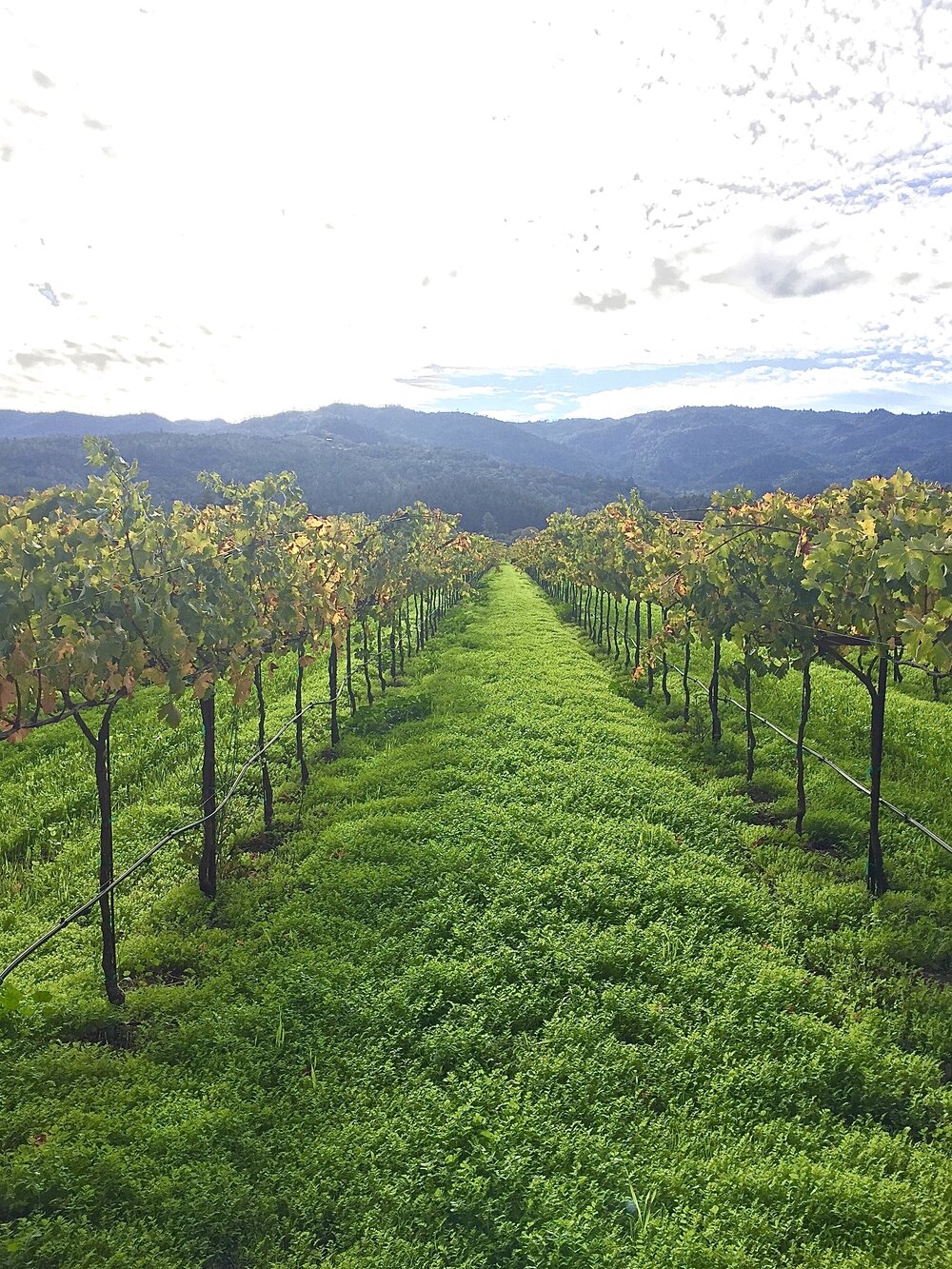
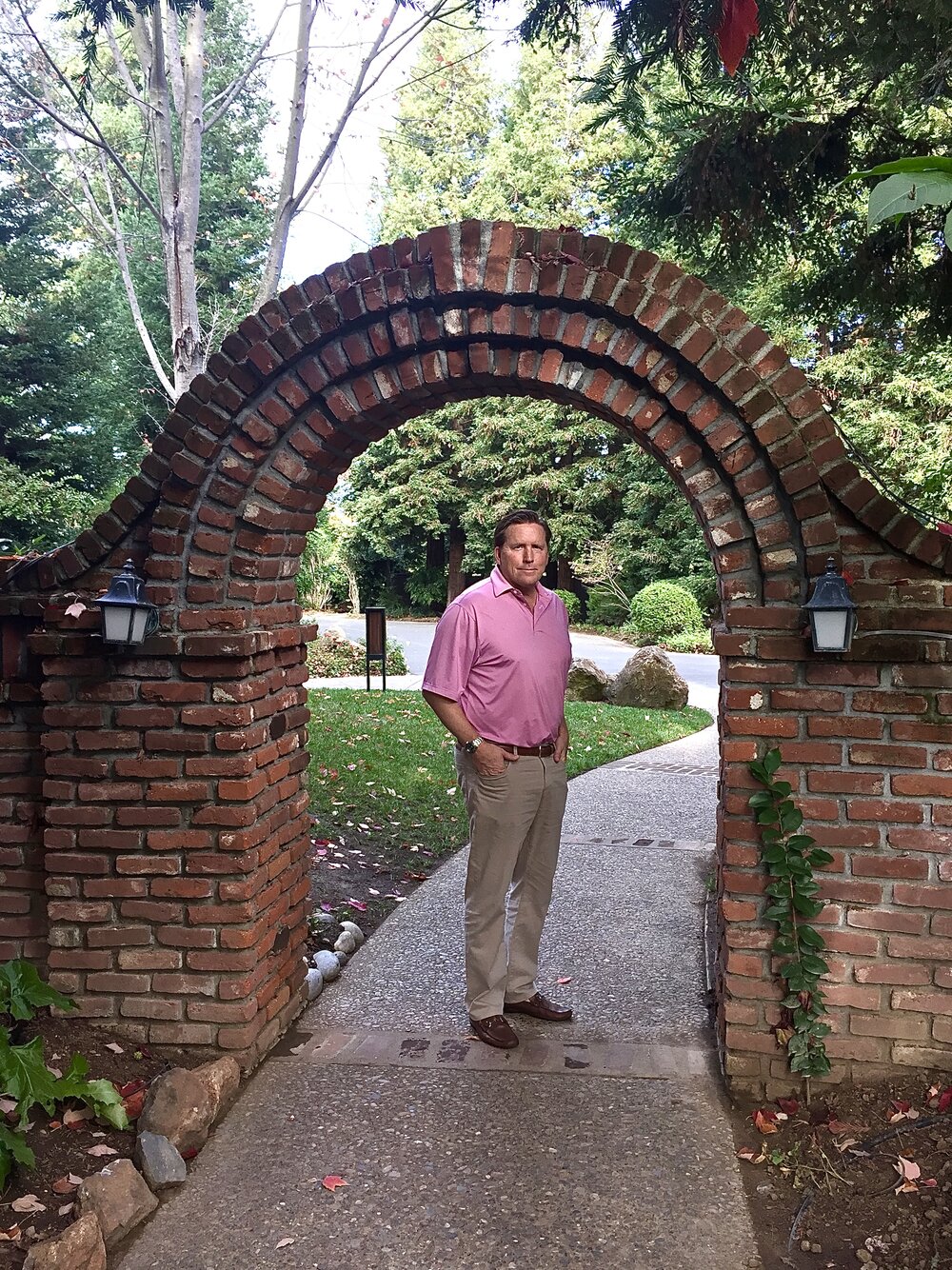
Having stayed at the inn a few years prior to the renovations, the improvements were immediately evident upon our arrival. The dated hotel lobby has been transformed into a sleek, modern reception area featuring fabulous ambient lighting, chic indoor and outdoor seating areas and a welcoming, festive U-shaped bar. While much has changed, the grand lobby staircase remains constant, serving as an architectural reminder of the property's history. The structure is also home to the hotel's new restaurant, Harvest Table, where we were fortunate to dine during our stay - more on that later!
The thoughtful renovations also included extensive refurbishing of many of the hotel's rooms which are grouped into "neighborhoods" featuring a variety of different views and amenities.
One newly renovated block is situated along the vineyards adjacent to the property, specifically Whitehall-Lane's Leonardini Family Vineyards. Appropriately dubbed the Vineyard View Collection, these charming, spacious rooms are perfect for those craving the full vineyard experience. Each room features a king sized bed; an oversized brick, wood-burning fireplace; cozy club chairs and couch and your own private terrace with a jacuzzi hot tub. Other amenities include daily, complimentary wine country breakfast, mini bar water and juice, in-room wine (yessss!!!), wireless internet, parking as well as the use of an evening house car, two spacious swimming pools and a fitness center.

We were fortunate enough to stay in one of these delightful rooms and let me assure you, there's nothing like an al fresco soak with a glass of Schramsberg bubbly in hand for your weary, wine drenched body after a long day of wine tasting - #pureheaven!
In addition to the fabulous rooms, one of the most wonderful features of the Harvest Inn by Charlie Palmer is its verdant, lush greenery which imbues the property with a natural beauty and inherent sense of privacy.
Gorgeous rose beds, stands of magnificent redwood trees, exquisite hydrangeas and perfumed wisteria all abound on the property and, since it was mid-Fall, the trees were also resplendent with gorgeous, reddish gold leaves. Beautiful stone fountains, a rotating sculpture installation and a serene koi pond also punctuate the landscape, offering even more visually pleasing vignettes.

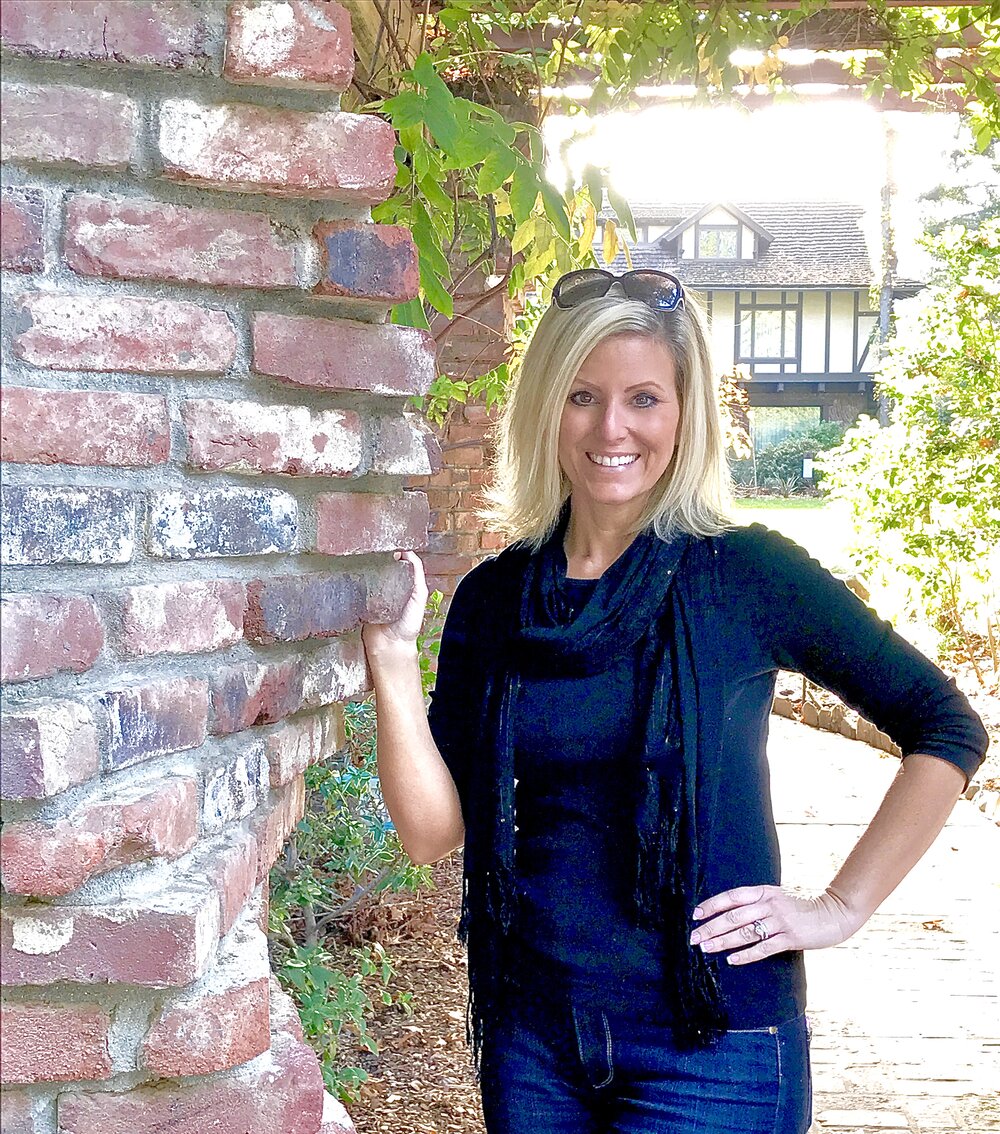
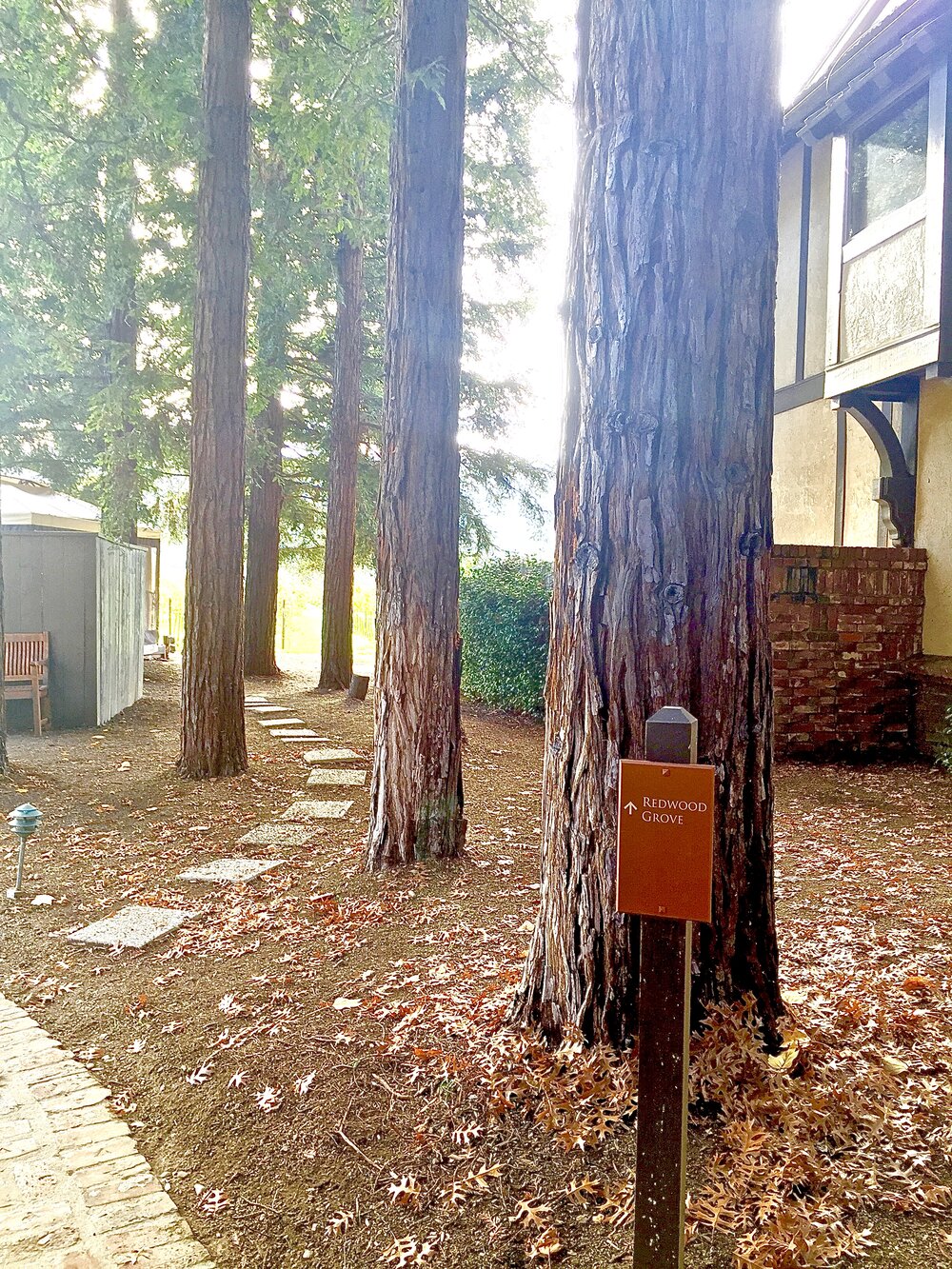

In addition to its beauty, the plentiful vegetation is also quite functional. There are five culinary gardens located on property, tended by expert Culinary Horticulturist Laura McNiff, whose bounty is featured nightly on the Harvest Table menu. The bar also utilizes an assortment of garden gems, including unique citrus (loved those Buddha hand lemons!), as well as an assortment of herbs and flowers.
Tomatoes, kale, lettuce and bright orange "cheddar cheese"cauliflower were also in abundance. Hop vines also proliferate among the property as well as various espaliered fruit trees (persimmon, Meyer lemon, apple), lavender and wild strawberries. Guests are encouraged to help themselves to anything they know is edible - just forget those peanut M&M's in the mini bar!
In addition to the greenery, the property is also home to three active beehives, as well as a variety of wildlife which is unofficially documented by the small landscaping team. Denizens include bald eagles, red foxes, squirrels and raccoons. As you can imagine, with all its natural beauty the property is the perfect venue for special ceremonies and gatherings. During our visit, a lovely vow renewal took place on the splendid lawn. As the wine country sun set in the West, it created an ethereal ambiance for the lucky couple.
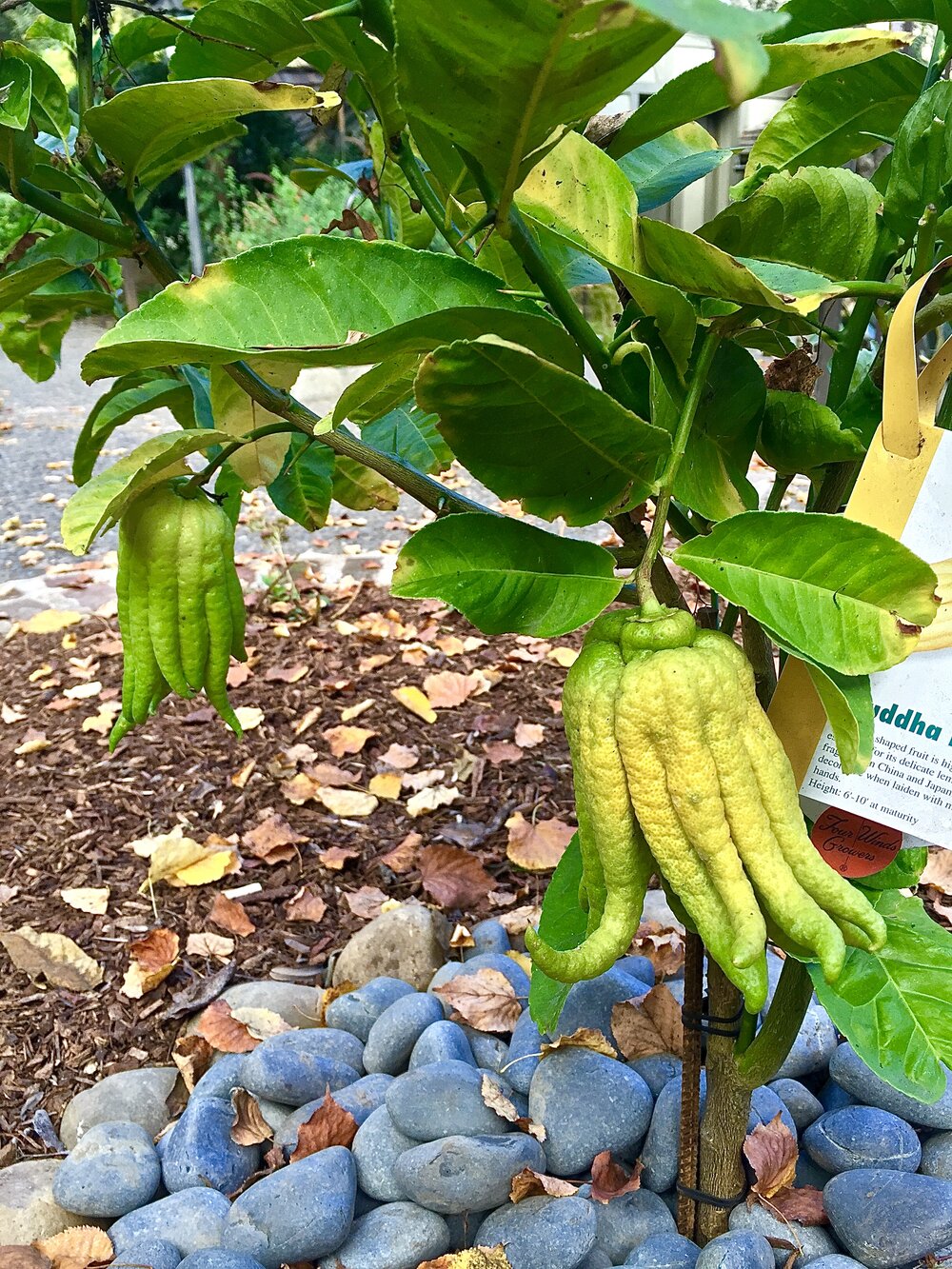
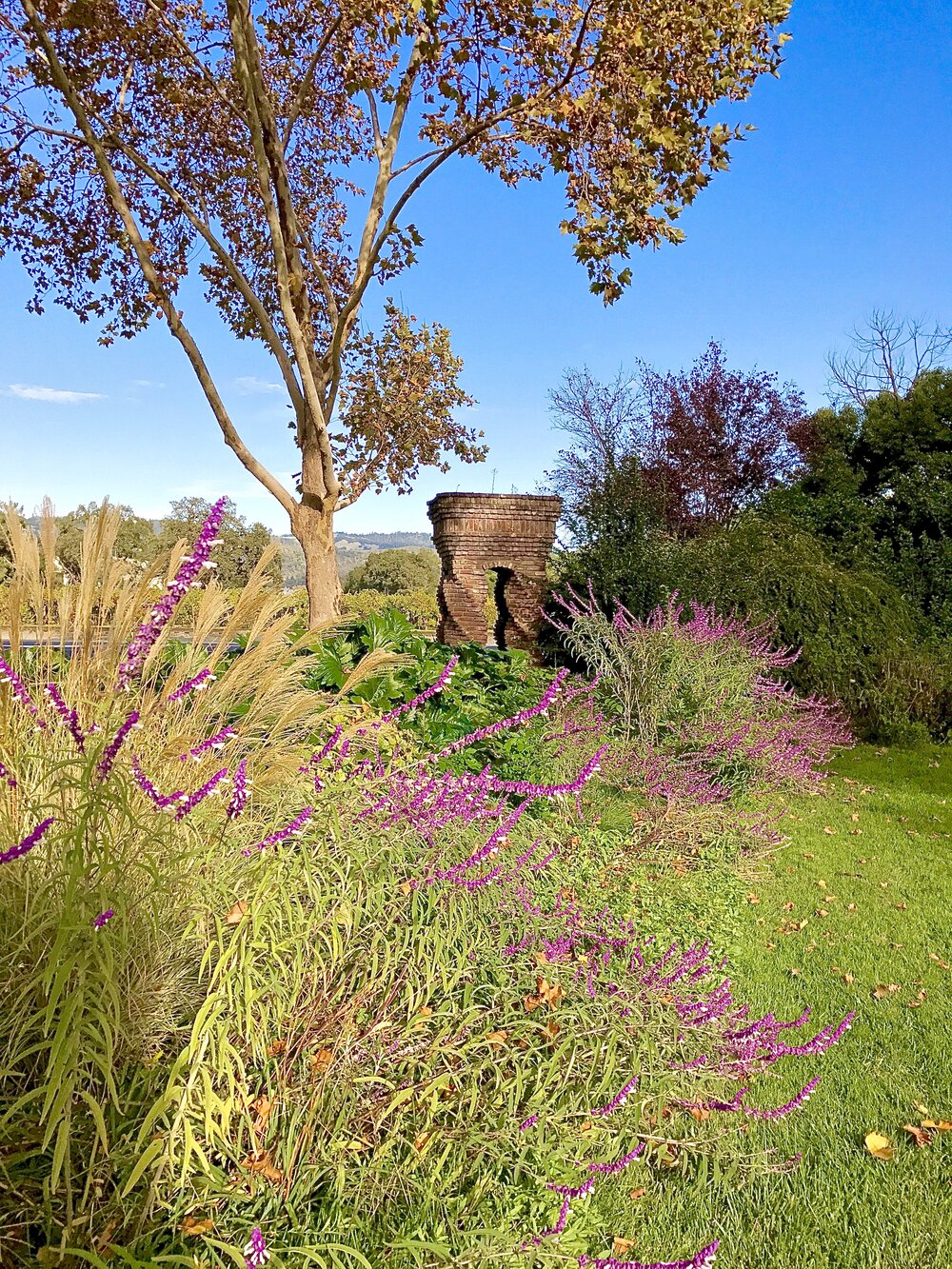

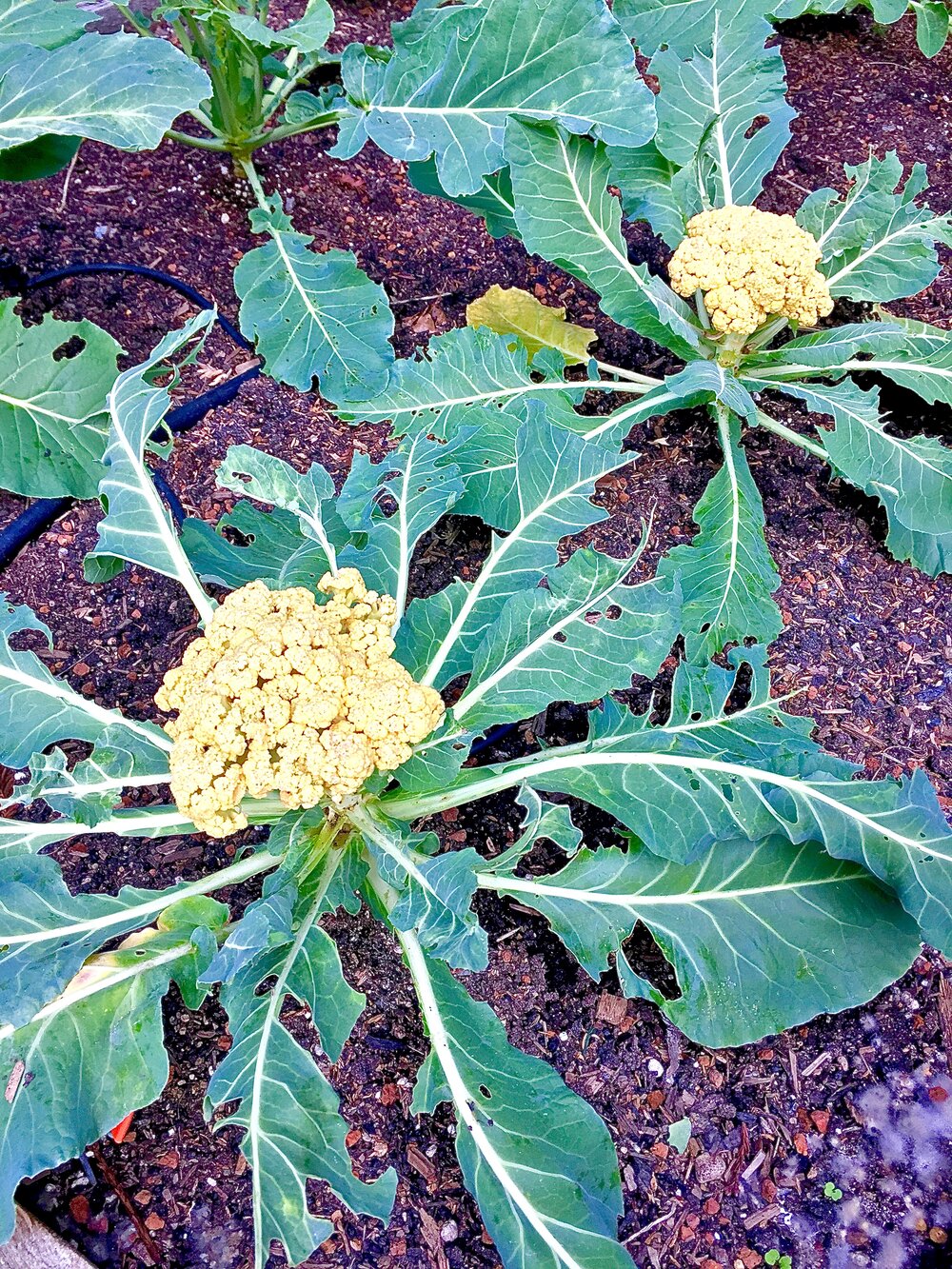
The Harvest Inn also offers spa treatment rooms for guests to indulge in their favorite massage, facial or treatment du jour. Care to enjoy your hot lava stone massage al fresco? The property also features private tents in case you'd like to receive your spa service (or couple's service) outdoors - très romantique!
We had the great pleasure of enjoying a fabulous, al fresco dinner at the Inn's restaurant, Harvest Table, during our stay. And I must say, it was definitely a highlight of our trip! Executive Chef Levi Mezick delighted us with his culinary skills and creativity, honed during stints with world renowned Chefs Daniel Boulud and Thomas Keller. Harvest Table's farm-to-fork menu showcases ingredients from the property's culinary gardens as well as many local purveyors.
The California-focused wine list also features a nice variety of selections from around the world. Sommelier Sasha Hagenlock expertly guided us towards wines which complemented our meal and suited our price range as well.We opted for many of Mezick's inspired seafood dishes ranging from succulent Oysters with Horseradish Sorbet & Tarragon ($12), to classic Southern Pan Roasted Shrimp & Grits with Andouille Sausage, Cheddar Cheese & Smoked Bacon ($16).
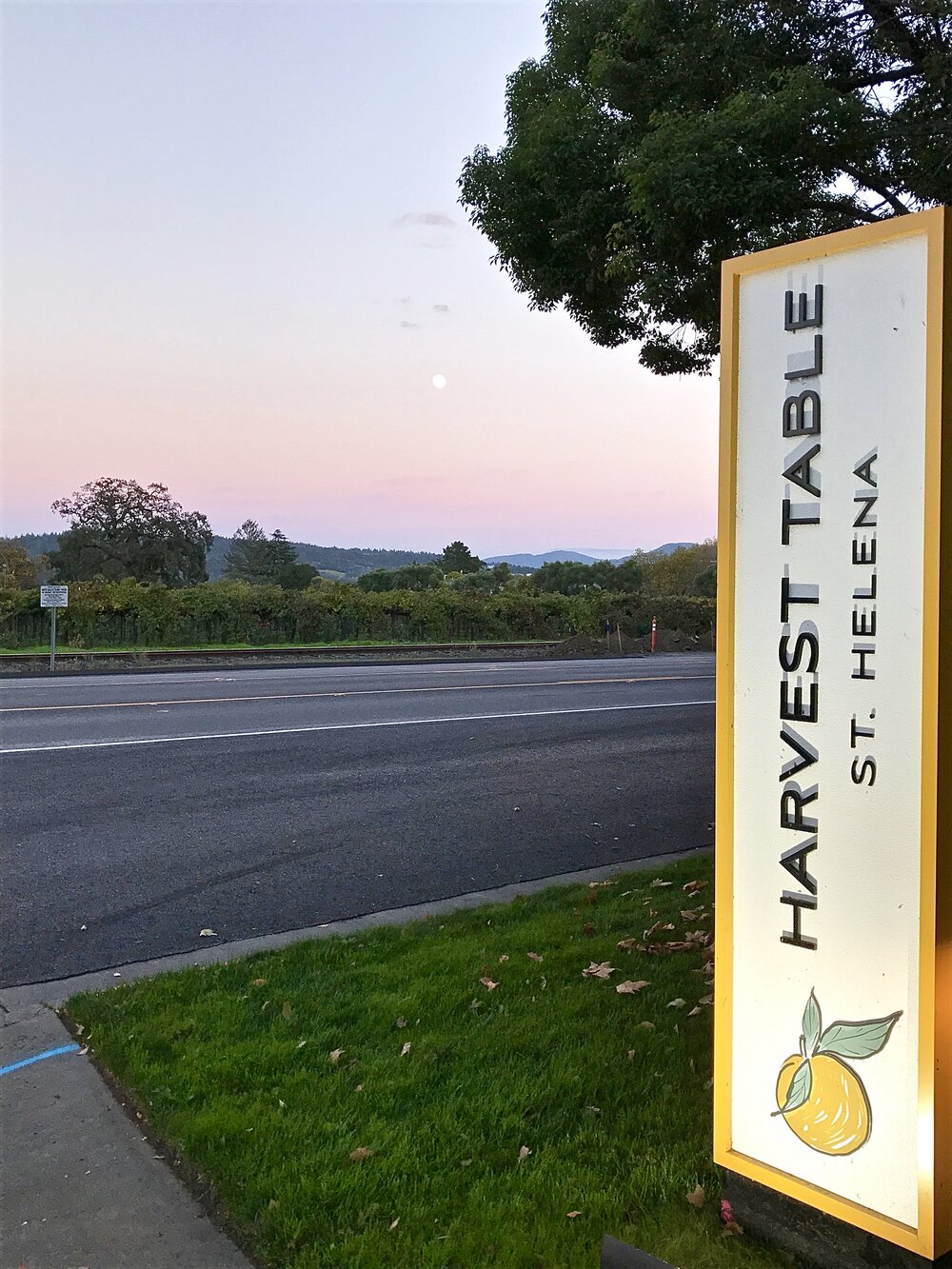

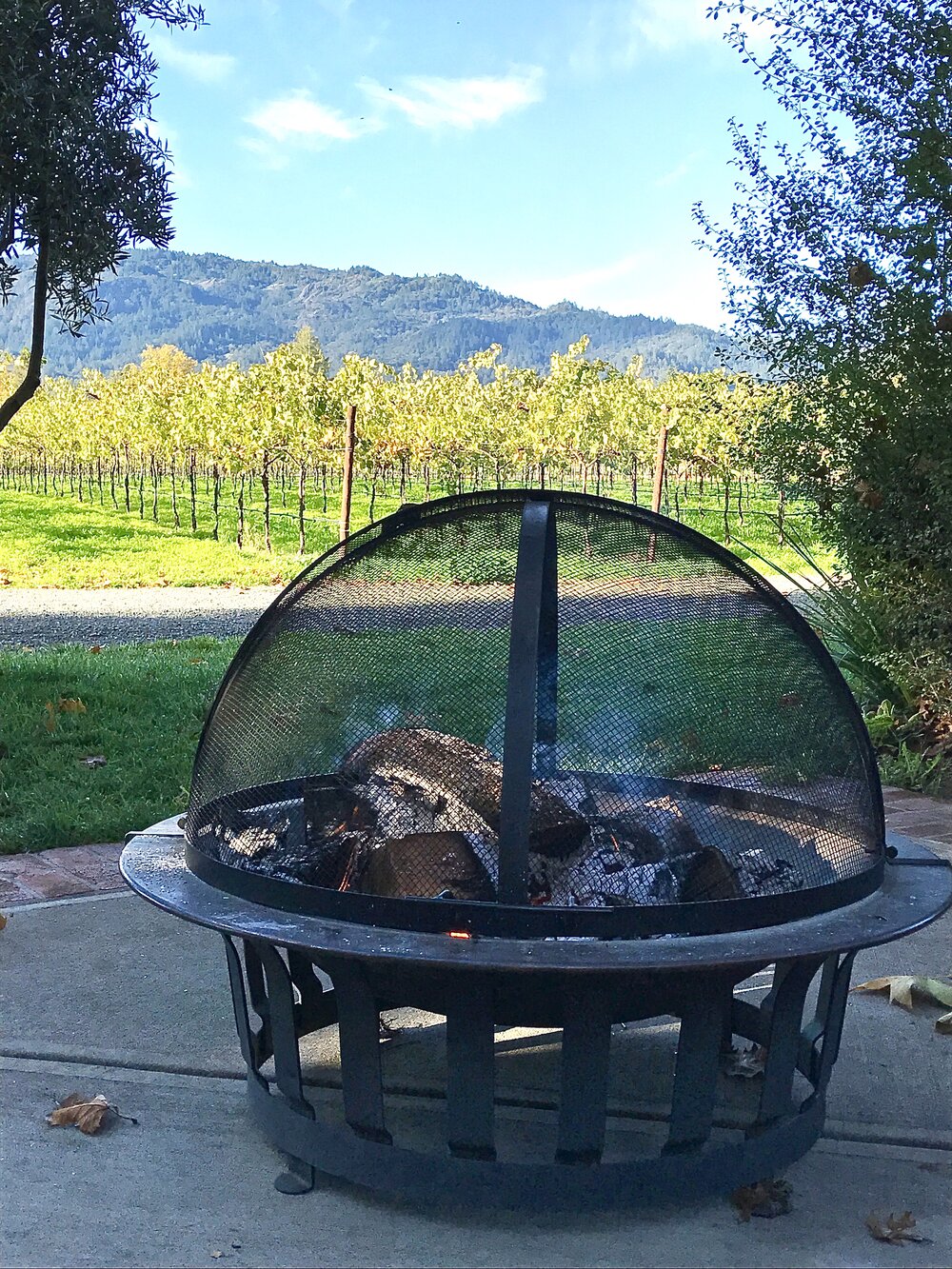

Chef's dishes were also as beautiful as they were delicious, especially the Dungeness Crab Salad with Granny Smith Apple Gelee, Persimmon & Garden Herbs ($15) with gorgeous pops of bright green, orange and red, and the Bread Crusted Red Snapper with Coconut Rice, Sesame Bok Choy and Tamarind Essence featuring a golden, Panko crusted pavé of snapper set neatly atop creamy rice and delicately flavored tamarind foam.
Mezick also infused some added deliciousness into some seemingly ‘everyday’ ingredients, including mouthwatering Roasted Carrots with Buttermilk, Vadouvan & Granola ($6) which had fabulous flavor, color and texture, as well as his highly addictive Rock Shrimp Hush Puppies with Old Bay & Spicy Gribiche ($8). Chef also made delicious use of the one part of the pig nobody EVER seems to know what to do with! His Crispy Pig Ear Salad with Cilantro & Yuzu Vinaigrette ($6) featured delicious thinly sliced, crispy strips of meat which added texture and dimension to the flavorful salad.
Another apparent highlight of the Harvest Table menu is the Truffle Chicken for Two ($65). A word to the wise, however, it takes an hour of preparation time and while our schedule didn't allow for us to indulge this time, we definitely look forward to it on our next trip!
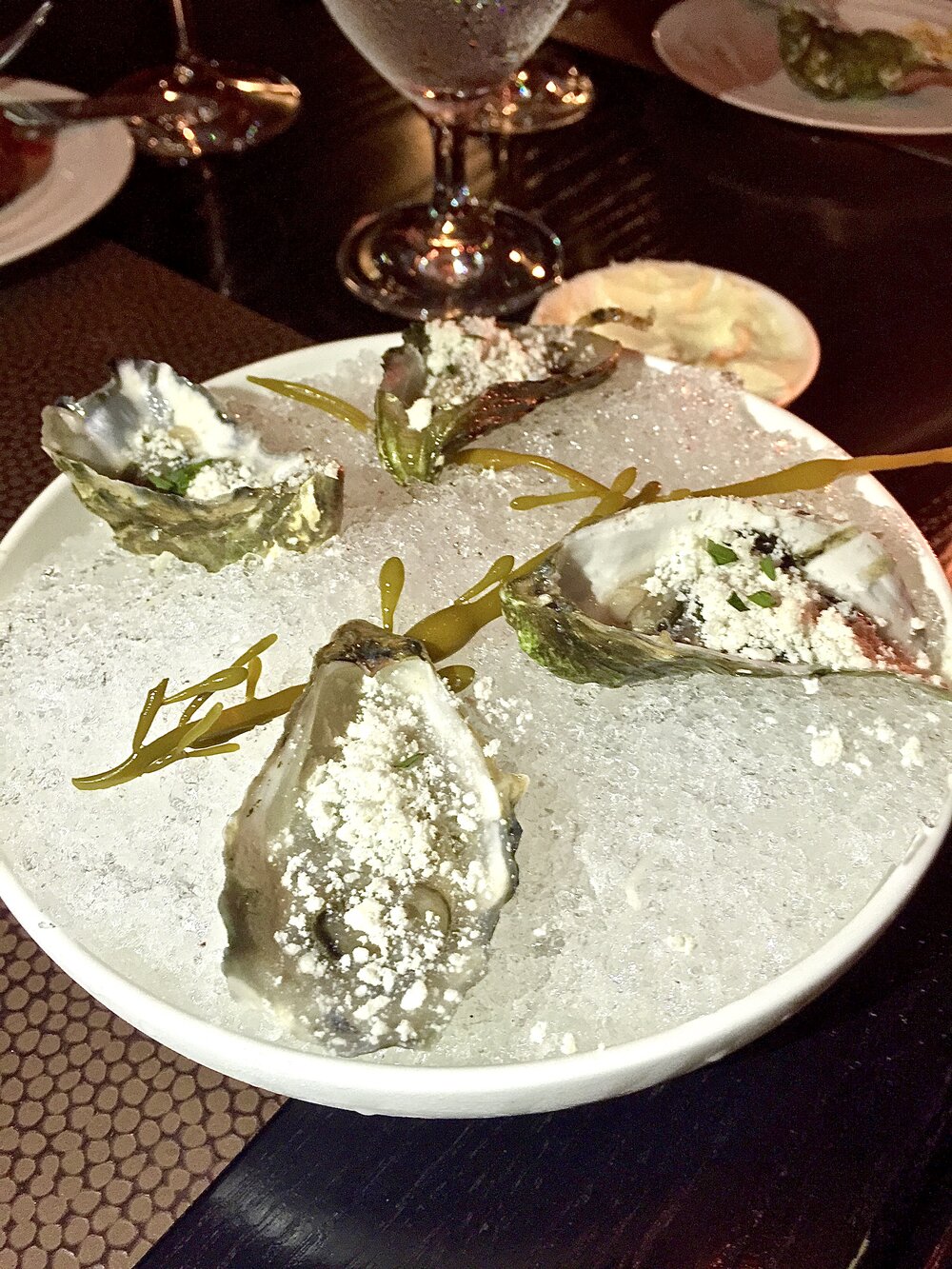

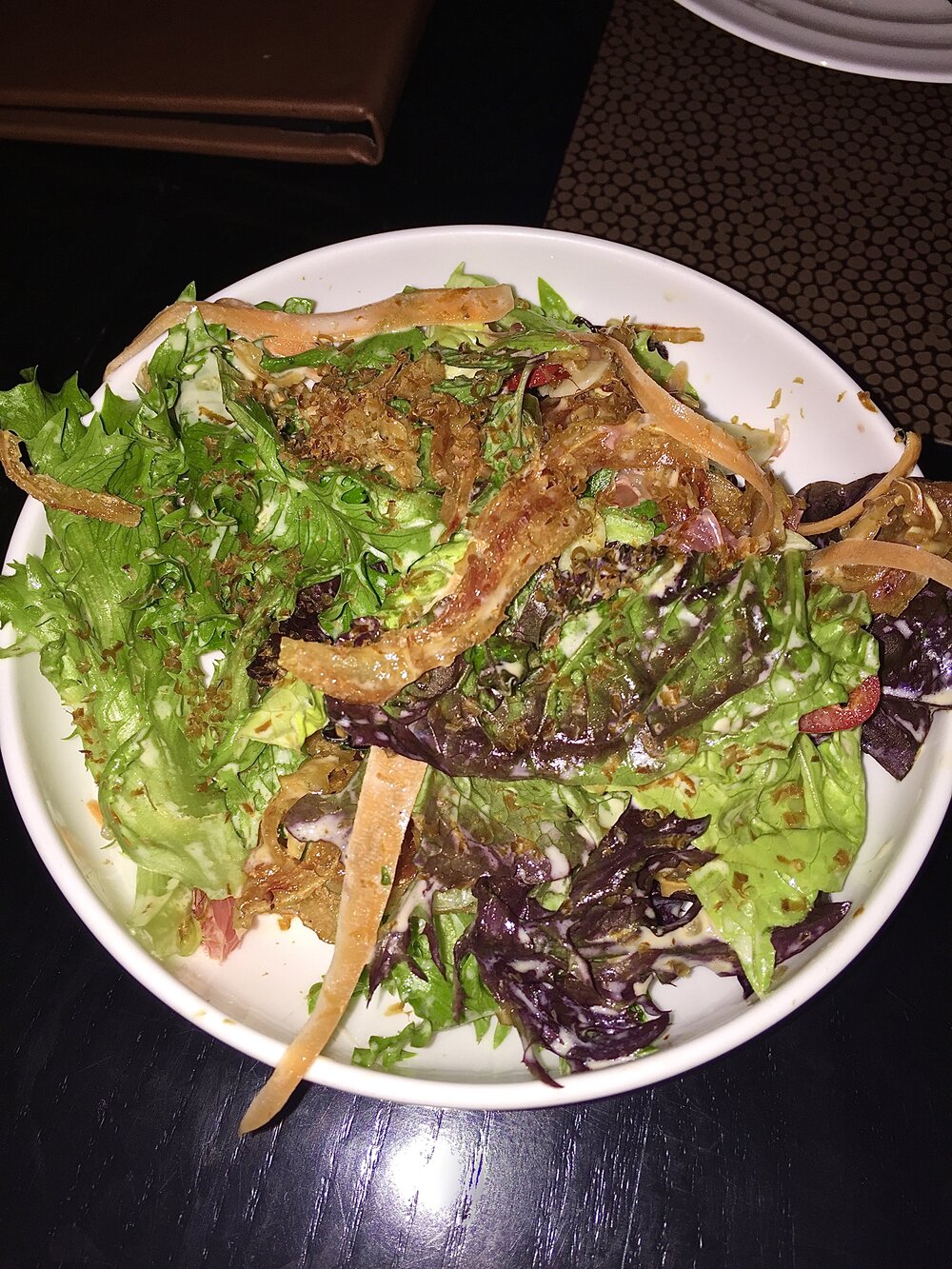

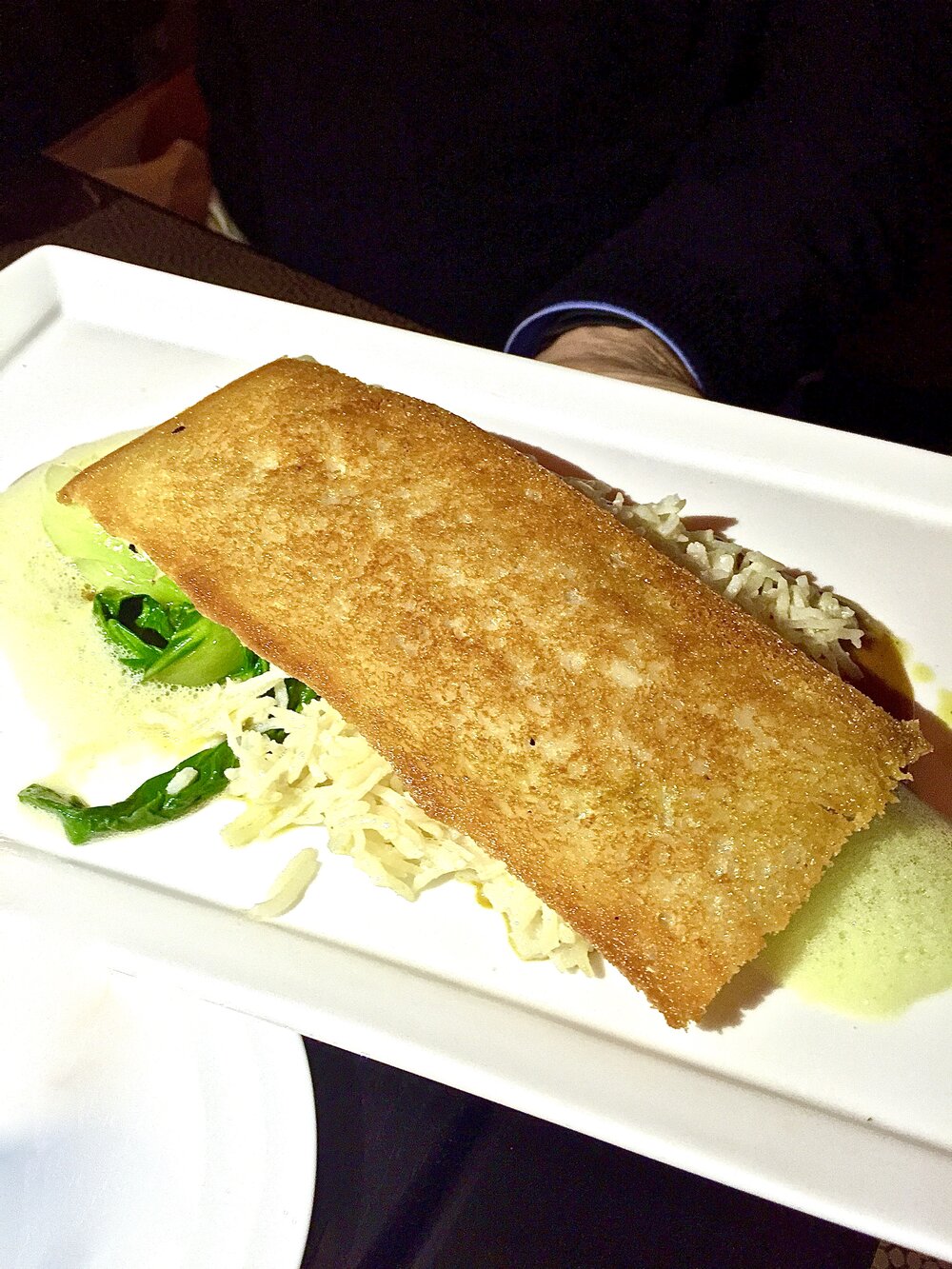
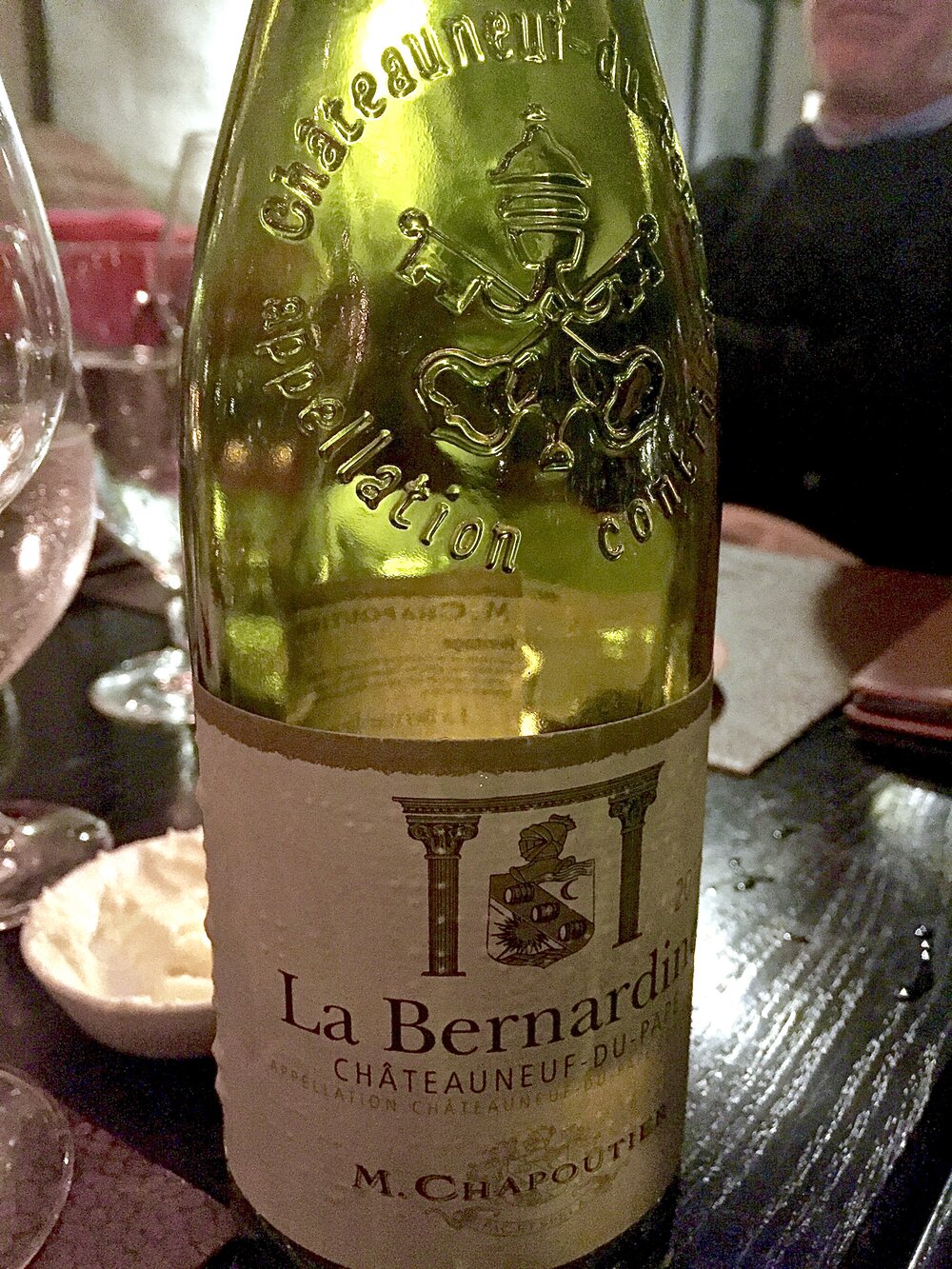
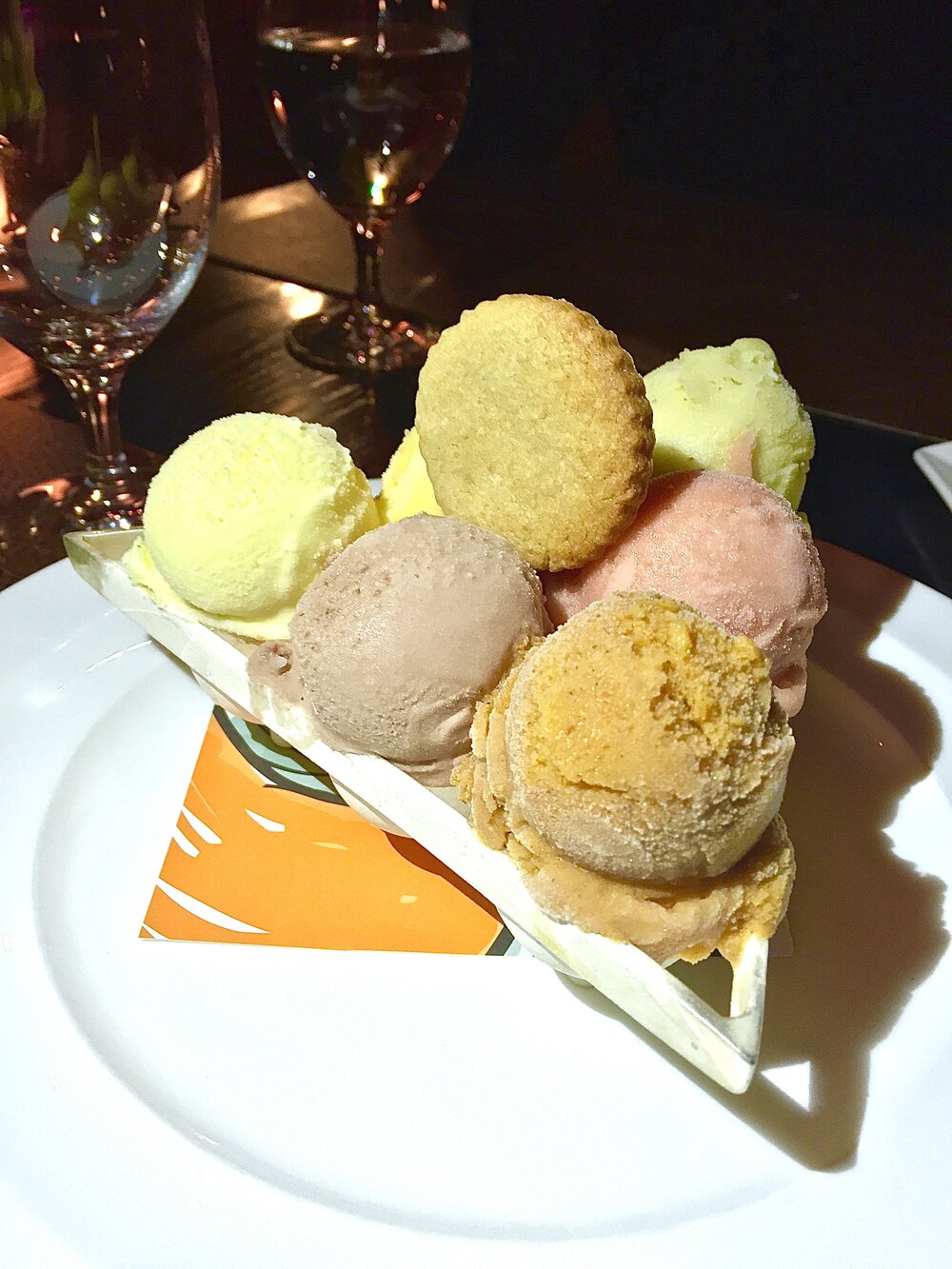
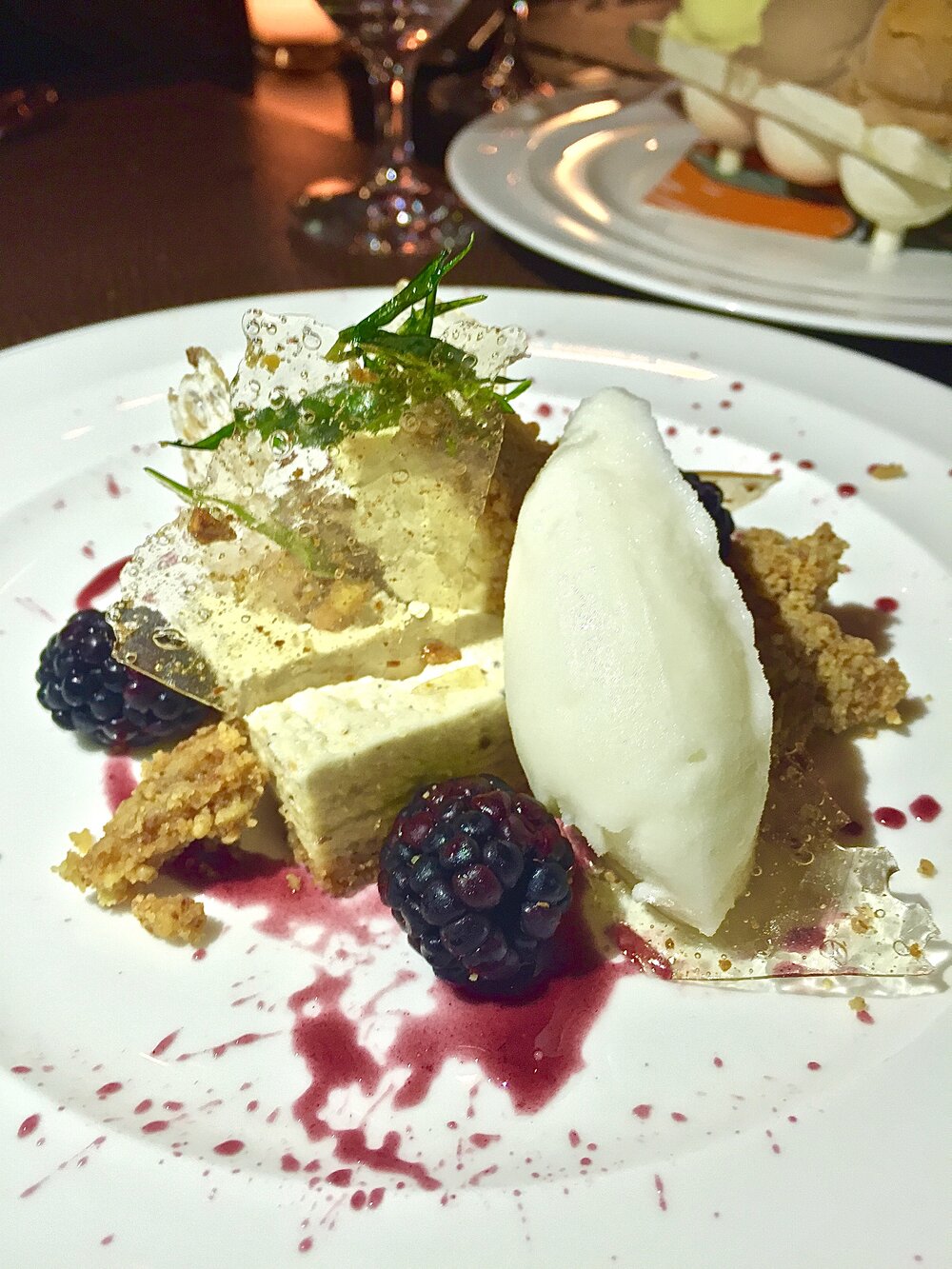

While we contemplated forgoing dessert - we were SO incredibly glad we didn't! Dessert was equally as enjoyable as our savory courses and included Roasted Sweet Corn Mousse with Blackberries and Lime Sherbet ($9), Chocolate + Peanut Butter Bar with Dark Chocolate Marquis, Peanut Butter Mousse & Chocolate Sorbet ($9) and my husband's favorite, the Tasting of House Made Ice Cream and Sorbet ($9). The flavors and textures of each dish demonstrated wonderful attention to detail and a mastery of flavor that was greatly appreciated.
The idyllic Harvest Inn by Charlie Palmer celebrates the vineyard way of life and offers its guests the chance to experience it firsthand in relaxed, rustic elegance. While conveniently situated in the historic hub of St. Helena with a plethora of well-known wineries nearby, the property's landscape provides a stylishly serene retreat for its guests. Chef Palmer has done a wonderful job integrating past and present in this special project, creating a harmony between the architecture and landscape while underpinning it all with a keen, experienced eye towards hospitality at every level.
Thanks to the Harvest Inn and its amazing staff for such a wonderful stay! For more information on the Harvest Inn by Charlie Palmer or its restaurant, Harvest Table, please see the information below or visit www.harvestinn.com.
Harvest Inn by Charlie Palmer | 1 Main Street | St. Helena, CA 94574 | 707.963.9463
During our recent trip to California wine country, we had the pleasure of staying at a very special place in the heart of the Napa Valley, The Harvest Inn by Charlie Palmer. The charming, eight-acre property is conveniently located minutes from downtown St. Helena, yet is tucked away in a secluded haven surrounded by lush greenery, towering redwood trees and, of course, beautiful vineyards.



Originally established in 1975, the beloved 78-room hotel had become a bit time worn over the years and, in 2014, underwent an extensive renovation under the guidance of James Beard Award-winning Chef and hotelier, Charlie Palmer. Palmer’s goal was to transform this modest, wine country inn into a luxurious St. Helena resort, with all the modern amenities and cache that’s de rigeur in the tony surrounding areas today. While Palmer recognized the need for tasteful updates, he and his team were careful to retain the property’s inherent charm, including the intricate brick and woodwork throughout that make the property so unique.


Having stayed at the inn a few years prior to the renovations, the improvements were immediately evident upon our arrival. The dated hotel lobby has been transformed into a sleek, modern reception area featuring fabulous ambient lighting, chic indoor and outdoor seating areas and a welcoming, U-shaped bar. While much has changed however, the grand lobby staircase remains, serving as an architectural reminder of the property’s history. The structure is also home to the hotel’s new restaurant, Harvest Table, at which we were fortunate to dine during our stay – more on that later!



The thoughtful renovations also included extensive refurbishing of many of the hotel’s rooms which are grouped into “neighborhoods” featuring a variety of different views and amenities.
One newly renovated block is situated along the vineyards adjacent to the property, specifically Whitehall-Lane’s Leonardini Family Vineyards. Appropriately dubbed the Vineyard View Collection, these charming, spacious rooms are perfect for those craving the full vineyard experience. Each room features a king sized bed; an oversized brick, wood-burning fireplace; cozy club chairs and couch and your own private terrace with a jacuzzi hot tub. Other amenities include daily, complimentary wine country breakfast, mini bar water and juice, in-room wine (yessss!!!), wireless internet, parking and the use of an evening house car, two swimming pools, fitness center and weekend wine tastings.
We were fortunate enough to stay in one of these delightful rooms and let me assure you, there’s nothing like an al fresco soak with a glass of Schramsberg bubbly in hand for your weary, wine drenched body after a long day of wine tasting – pure heaven!



In addition to the fabulous rooms, one of the most wonderful features of the Harvest Inn by Charlie Palmer is its verdant, lush greenery which imbues the property with a fabulous natural beauty and sense of privacy.
Gorgeous rose beds, stands of magnificent redwood trees, exquisite hydrangeas and perfumed wisteria all abound and, since it was mid-Fall, the trees were also resplendent with gorgeous, reddish gold leaves. Beautiful stone fountains, a rotating sculpture installation and a serene koi pond also punctuate the landscape, offering even more visual intrigue.



In addition to its beauty, the plentiful vegetation is also quite functional. There are five culinary gardens located on property, tended by expert Culinary Horticulturist Laura McNiff, whose bounty is featured nightly on the Harvest Table menu. The bar also utilizes an assortment of garden gems, including unique citrus (the Buddha’s hand lemons were very interesting!), as well as an assortment of herbs and flowers.
Tomatoes, kale, lettuce and bright orange “cheddar cheese” cauliflower were all in abundance. Hop vines also proliferate among the property as well as various espaliered fruit trees (persimmon, Meyer lemon, apple), lavender and wild strawberries. Guests are encouraged to help themselves to anything they know is edible – forget those M&M’s in the mini bar!



In addition to the greenery, the property is also home to three active beehives as well as a variety of wildlife which is unofficially documented by the small landscaping team. Denizens include bald eagles, red foxes, squirrels and raccoons. As you can imagine, with all its natural beauty the property is the perfect venue for special ceremonies and gatherings. During our visit, a lovely vow renewal took place on the splendid lawn. As the wine country sun set in the West, it created an ethereal ambiance for the lucky couple.
The Harvest Inn also offers spa treatment rooms for guests to indulge in their favorite massage, facial or treatment du jour. Care to enjoy your hot lava stone massage al fresco? The property also features private tents in case you’d like to receive your spa service (or couple’s service) outdoors – très romantique!




We had the great pleasure of dining at the Inn’s restaurant, Harvest Table, during our stay. In fact, our delicious al fresco meal was definitely a highlight of our trip!
Executive Chef Levi Mezick delighted us with his culinary skills and creativity, honed during stints with world renowned Chefs Daniel Boulud and Thomas Keller. Harvest Table’s farm-to-fork menu showcases ingredients from the property’s culinary gardens as well as many local purveyors. The California-focused wine list also features a nice variety of selections from around the world. Sommelier Sasha Hagenlock expertly guided us towards wines which complemented our meal and suited our price range as well.



We opted for many of Mezick’s inspired seafood dishes ranging from succulent Oysters with Horseradish Sorbet & Tarragon ($12), to classic Southern Pan Roasted Shrimp & Grits with Andouille Sausage, Cheddar Cheese & Smoked Bacon ($16).
Mezick’s dishes were also as beautiful as they were delicious, especially the Dungeness Crab Salad with Granny Smith Apple Gelee, Persimmon & Garden Herbs ($15) with gorgeous pops of bright green, orange and red, and the Bread Crusted Red Snapper with Coconut Rice, Sesame Bok Choy and Tamarind Essence featuring a golden, Panko crusted pavé of snapper set neatly atop creamy rice and delicately flavored tamarind foam.



Mezick also infused some added deliciousness into some seemingly ‘everyday’ ingredients, including mouthwatering Roasted Carrots with Buttermilk, Vadouvan & Granola ($6) which had fabulous flavor, color and texture, as well as his highly addictive Rock Shrimp Hush Puppies with Old Bay & Spicy Gribiche ($8). Chef also made delicious use of the one part of the pig nobody EVER seems to know what to do with! His Crispy Pig Ear Salad with Cilantro & Yuzu Vinaigrette ($6) featured delicious thinly sliced, crispy strips of meat which added texture and dimension to the flavorful salad.
Another apparent highlight of the Harvest Table menu is the Truffle Chicken for Two ($65). A word to the wise, however, it takes an hour of preparation time and while our schedule didn’t allow for us to indulge this time, we definitely look forward to it on our next trip!



While we contemplated forgoing dessert – we were SO incredibly glad we didn’t! Dessert was equally as enjoyable as our savory courses and included Roasted Sweet Corn Mousse with Blackberries and Lime Sherbet ($9), Chocolate + Peanut Butter Bar with Dark Chocolate Marquis, Peanut Butter Mousse & Chocolate Sorbet ($9) and my husband’s favorite, the Tasting of House Made Ice Cream and Sorbet ($9). The flavors and textures of each dish demonstrated wonderful attention to detail and a mastery of flavor that was greatly appreciated.



The idyllic Harvest Inn by Charlie Palmer celebrates the vineyard way of life and offers its guests the chance to experience it firsthand in relaxed, rustic elegance. While conveniently situated in the historic hub of St. Helena with a plethora of well-known wineries nearby, the property’s landscape provides a stylishly serene retreat for its guests. Palmer has done a wonderful job integrating past and present in this special project, creating a harmony between the architecture and landscape while underpinning it all with a keen, experienced eye towards hospitality at every level.
Thanks to the Harvest Inn and its amazing staff for such a wonderful stay! For morning information on the Harvest Inn by Charlie Palmer or its restaurant, Harvest Table, please see the information below or visit www.harvestinn.com.
Harvest Inn by Charlie Palmer
1 Main Street
St. Helena, CA 94574
707.963.9463
Bon appétit,
![]()
The post Wine Country Travel: Harvest Inn by Charlie Palmer appeared first on The Glamorous Gourmet.
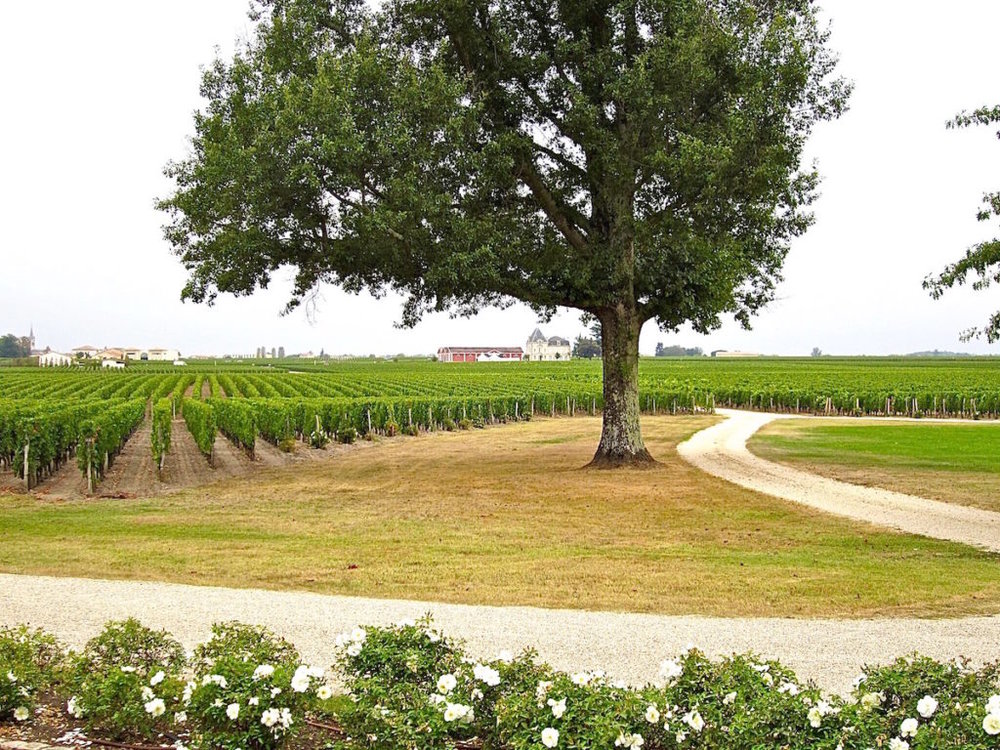
Fans of the movie Sideways, the wine-drenched 2004 film following the debaucherous adventures of friends, Jack and Miles, in California wine country, will probably recall Miles' disdain for one grape in particular...Merlot. His obvious, ahem, revulsion at the mere mention of it is really quite hilarious - click here to view but be warned, there's a smidge of profanity!
The irony in the film, however, is that Miles' most treasured bottle in his wine collection is a 1961 Château Cheval Blanc, a highly coveted, collectible bottle made of mostly...wait for it...MERLOT! Perhaps the wine's status as one of the most revered Bordeaux wines in existence made it possible for him to overcome his Merlot-phobia?
It's hard to say, but thoughts of the film had us smiling as we eased into the gravel drive of Château Cheval Blanc on a hauntingly beautiful, overcast September day.

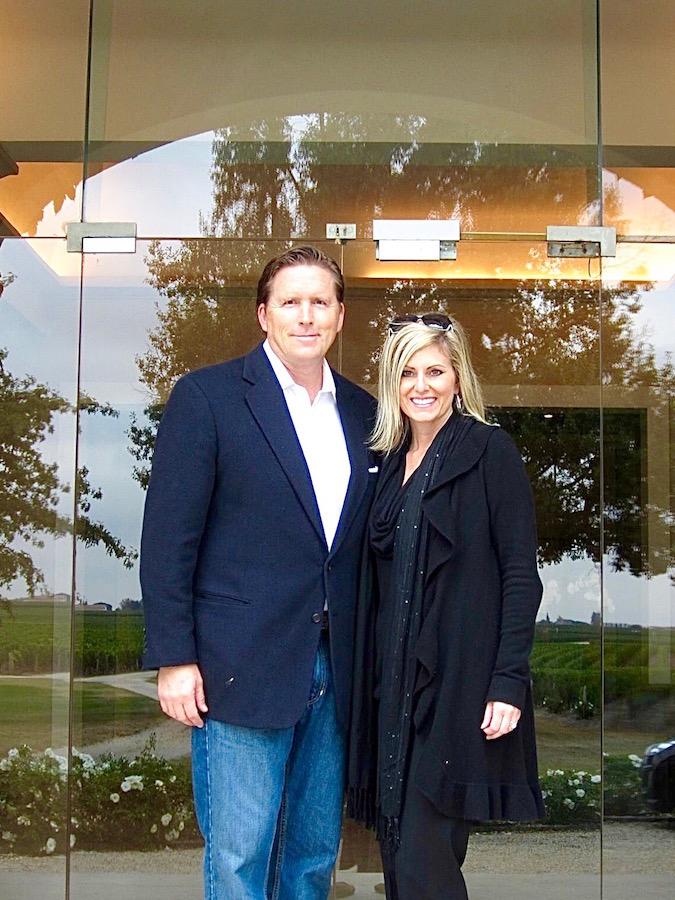
Located in rural Saint-Émilion among the lush greenery of Bordeaux's Right Bank, we were looking forward to visiting this revered estate whose terroir has been highly regarded since the 15th century. The estate currently produces two wines, the eponymous Château Cheval Blanc as well as a second wine, La Petit Cheval, which made its debut in the 1988 vintage.
In addition to its wines, the Château had also recently completed a major renovation which we were also very eager to experience. But first, a little vinous history.
Since the Saint-Émilion classification system's inception in 1954, Cheval Blanc has been categorized as a Premier Cru Classe A, the system's highest level. The Chateau shares this distinction with only three other producers: Château Ausone, Château Pavie and Château Angélus. While Cheval Blanc and Ausone have been exclusive members of this prestigious classification since the beginning, the 2012 update added Chateaux Pavie and Angélus.

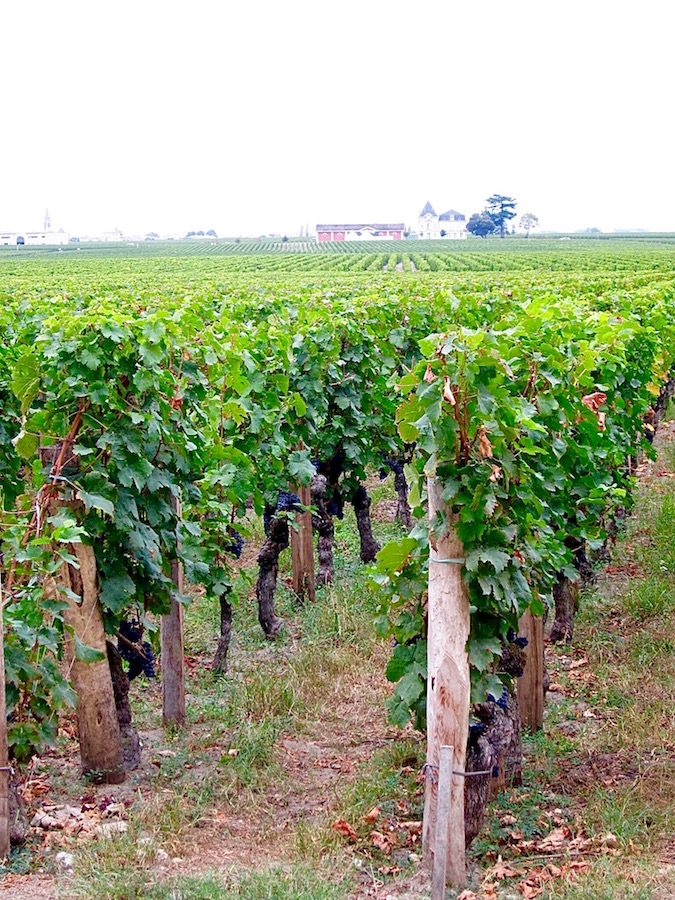
The property now known as Château Cheval Blanc, French for "white horse," was once part of a larger, 200-hectare estate known as Château Figeac. While vines have been grown here for centuries, it wasn't until Jean-Jacques Ducasse purchased a portion of the estate in 1832, that the core of what many would consider the finest Chateau in all of Bordeaux was formed. Over the next 20 years, the family continued to add land to estate until it reached 39 hectares which is where it still stands today.
When Jean-Jacques' daughter Henriette married Jean Laussac-Fourcaud, a Libourne wine merchant, a new chapter in the evolution of Château Cheval Blanc began. In the 1860's, Laussac-Fourcaud's keen intuition led him to replant the vineyards to half Merlot and half Cabernet Franc, the two grapes which, to this day, thrive on Bordeaux's Right Bank.
He also realized the importance of water stress in order to produce the finest grapes possible. Formerly known as vin de Figeac, the wine was first sold under the Cheval Blanc name in 1852.
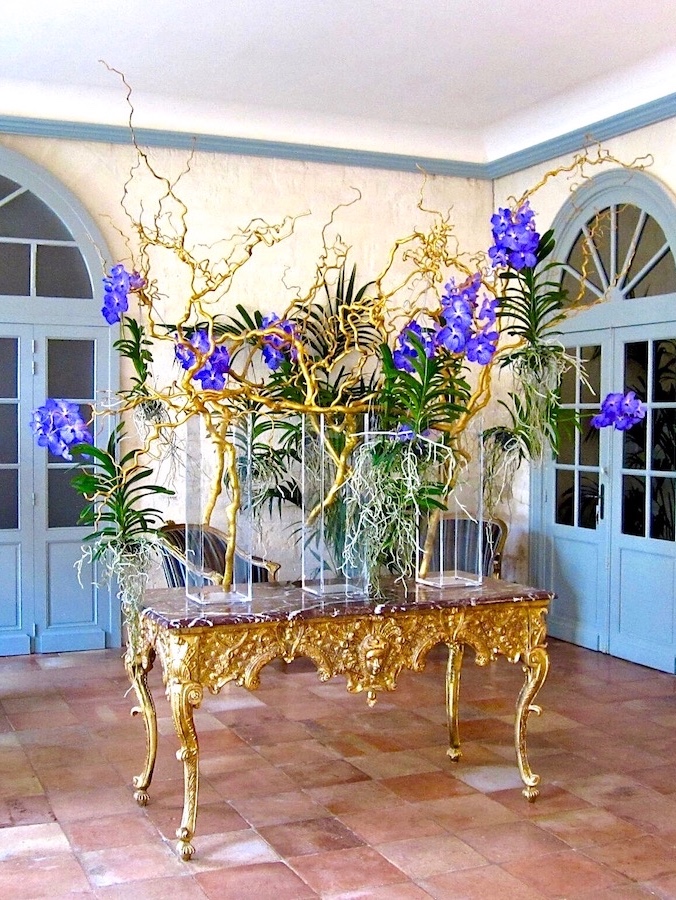
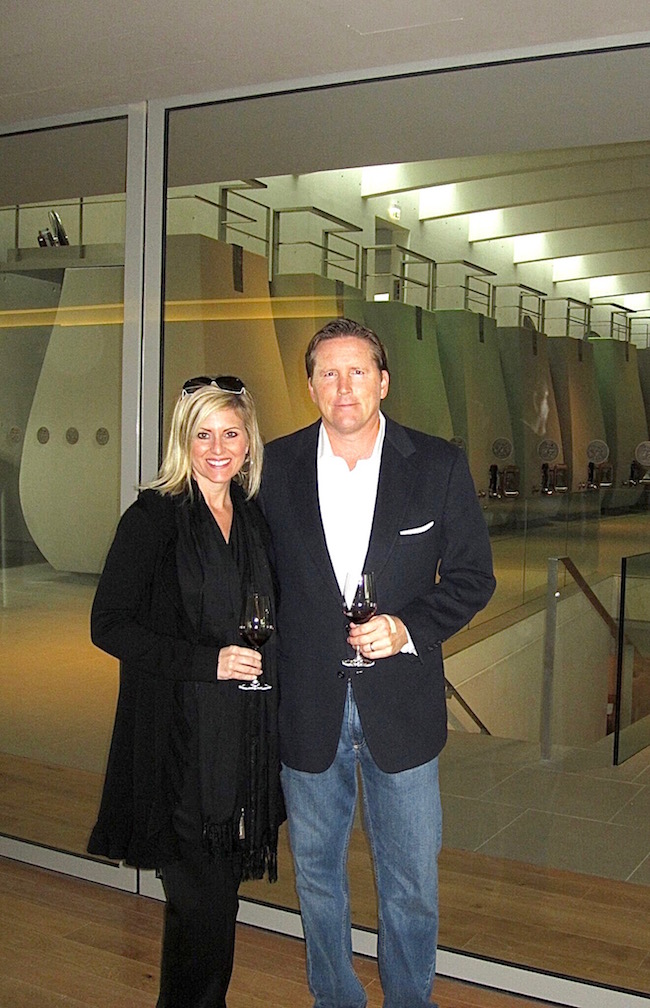
For thirty years, Jean Laussac-Fourcaud dedicated himself to one thing only, making the wines of Château Cheval Blanc the best in Saint-Émilion! His hard work paid off and his wines won many awards over the years and developed a reputation of excellence.
In the 1880's Cheval Blanc was even considered on par with the finest wines of the Médoc, garnering similar prices as wines from the famed Chateaux Margaux, Latour, Lafite and Haut-Brion. Once Jean Laussac-Fourcaud passed away, his son Albert inherited the Chateau and perpetuated the work of his father and made even more improvements in the vineyard. By the time Albert's two sons, Jacques and Joseph, inherited the estate, they too followed in the footsteps of their father and grandfather before them.
Over the ensuing decades, acknowledgements of excellence continued to solidify the family's legacy including the aforementioned appointment in the Saint-Emilion Classification system as Premier Grand Cru Classé "A." This exalted rank was perpetuated in each following classification update and Cheval Blanc became a member of the exclusive "Club of 9" comprising the first growths of Bordeaux. Perhaps cellarmaster of Cheval Blanc for 44 years, Gaston Vaissière, summed it up best when he deemed the vineyards' terroir "magical."
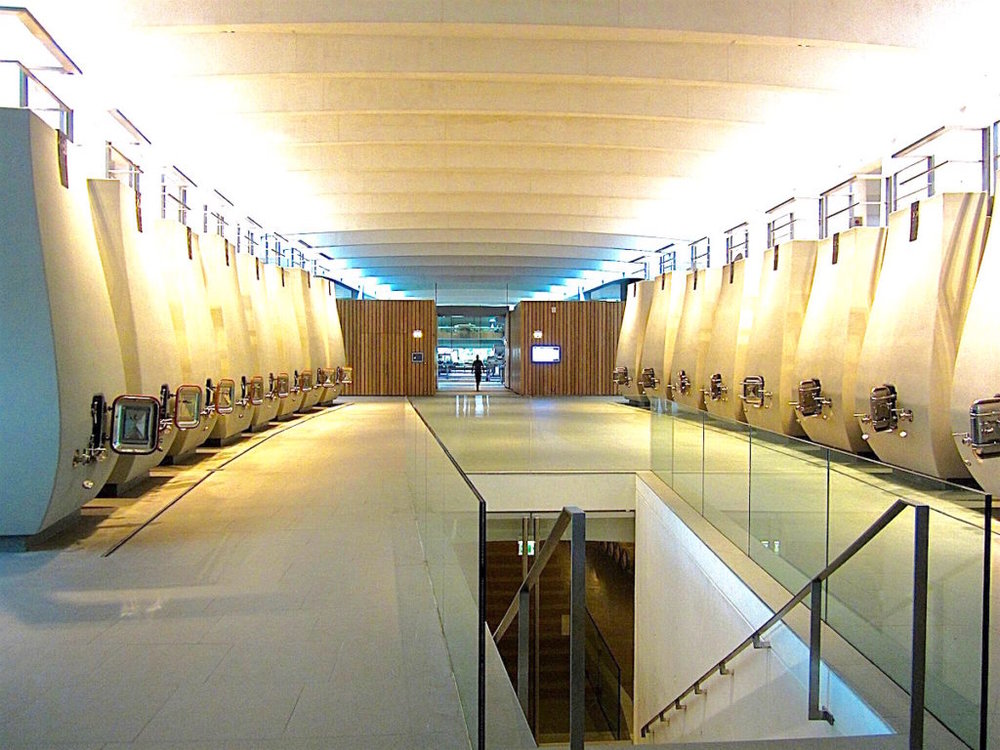
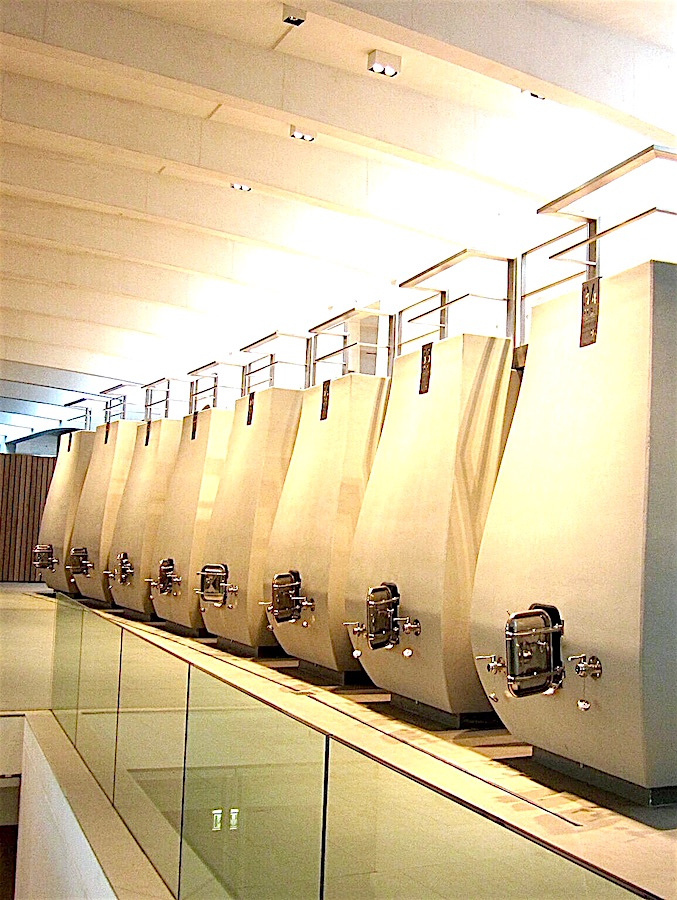
The priority today continues to be producing wines of the utmost quality, which calls for enormous attention to detail and winemaking precision.
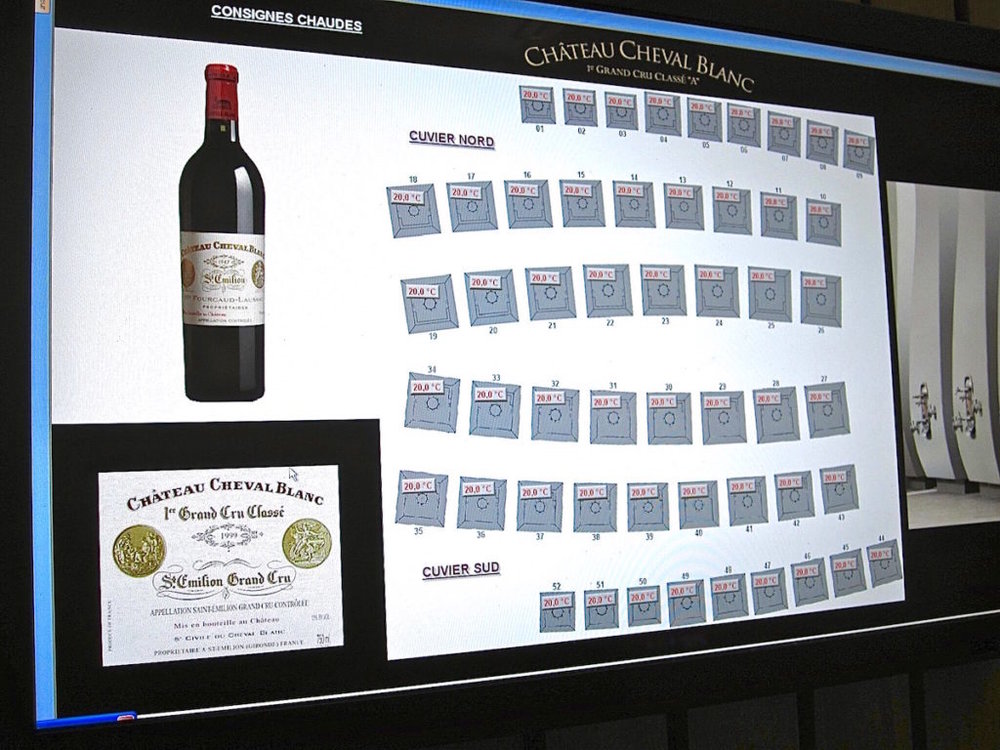
Another important chapter of the Cheval Blanc story commenced in the Autumn of 1998 when Bernard Arnault and Baron Albert Frère, old friends and lovers of great wine, joined forces to purchase the fabled château.
They brought on Pierre Lurton as Estate Manager and injected a dynamic new spirit into the Château while maintaining the utmost reverence and respect for its history. They also placed their complete trust in the winemaking team to continue their wonderful work. The priority today continues to be producing wines of the utmost quality, which calls for enormous attention to detail and winemaking precision.
With a vision towards the future, the duo embarked on the addition of a new, state-of-the-art cellar adjacent to the Château. The impressively modern structure was designed by Christian de Portzamparc, winner of the Pritzker Architecture Prize in 1994, and was completed in June 2011. Reflecting the taste of the Château owners, the addition is both futuristic and in keeping with the surrounding historic vineyard landscape which is listed as a World Heritage Site by UNESCO.
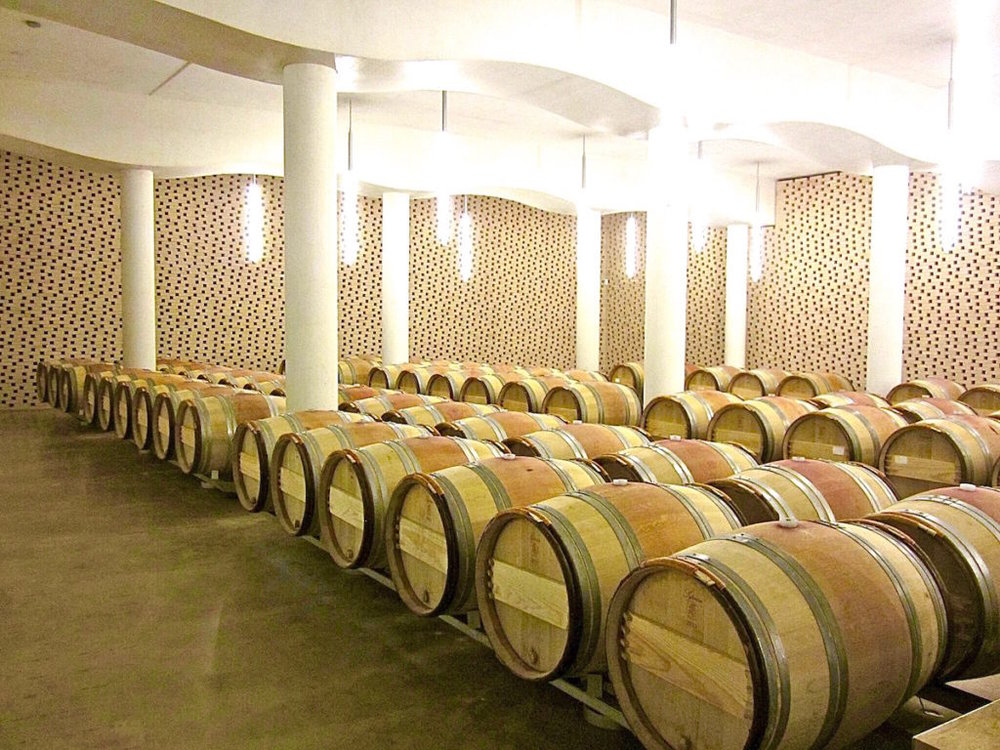
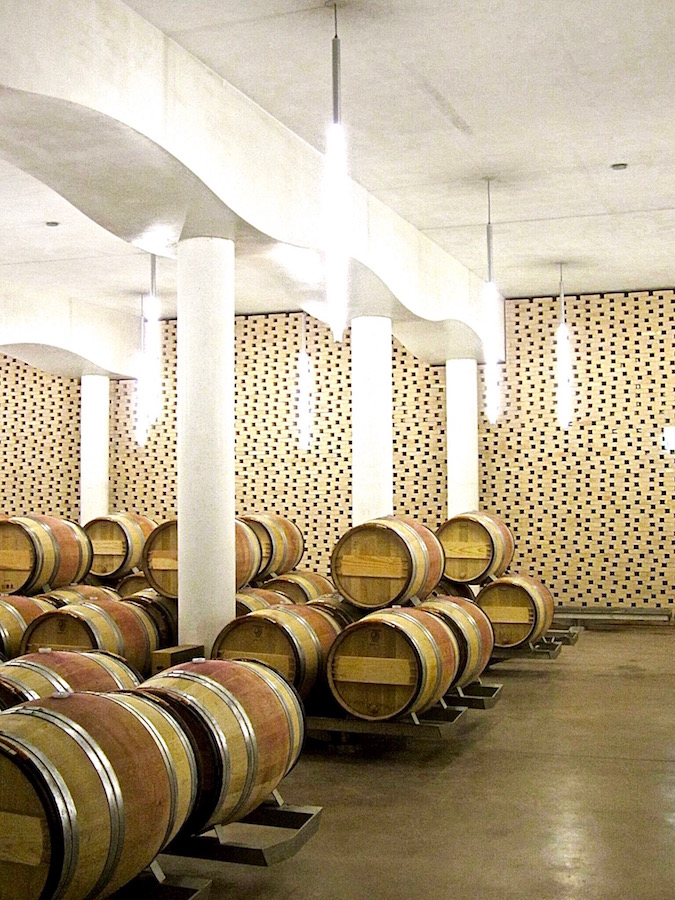
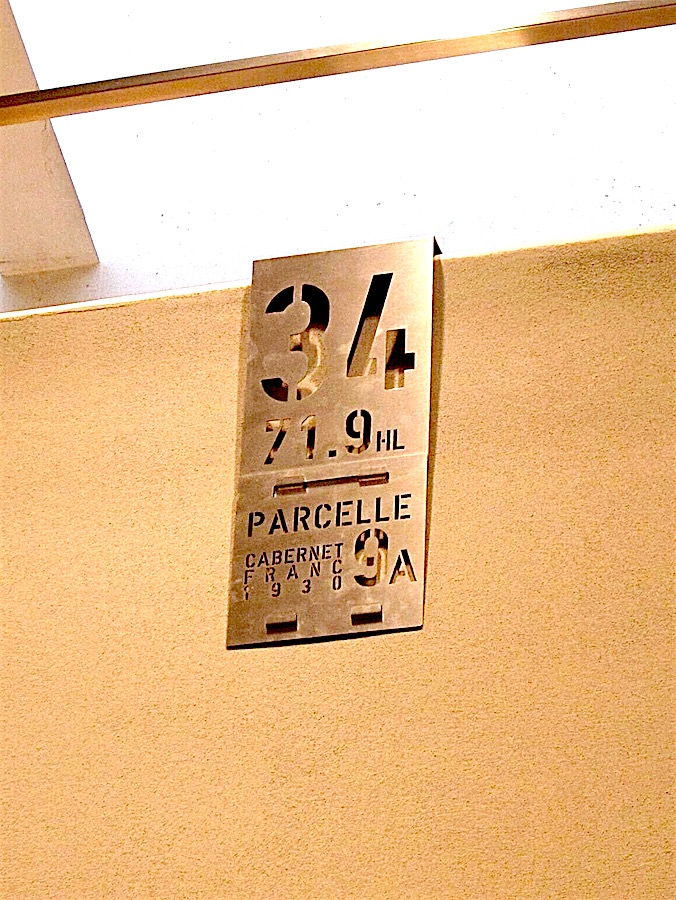
The new Cheval Blanc cellar was extremely well-received and the first structure in its category to be certified for the High Quality Environmental (HQE) standard. With its uber-stringent criteria, this certification recognizes great care taken in choosing building materials, energy conservation, waste water management as well as acoustic comfort and employee well-being.
On our tour of the new facility, we felt like we were walking on truly hallowed ground. The new cellar's intimate yet airy feel exuded elegance with its monochromatic colors and diffused natural light. One of the most striking interior vistas features six rows of curvilinear Italian concrete vats stoically flanking a walkway and stairwell down to the barrel room.
The number of vats correlates exactly with the Chateau's fifty two vineyard plots, allowing each one to be vinified separately, a very important component in the production of the Cheval Blanc wines. Each bespoke vat is individually tailored to the size of its assigned vineyard plot and labelled with its corresponding plot number, grape variety and the number of hectoliters the plot produces. The temperature of each vat is also individually controlled and monitored by a super sophisticated control panel. The integration of tech-savvy features and sophisticated aesthetics in this impressive structure was truly amazing!
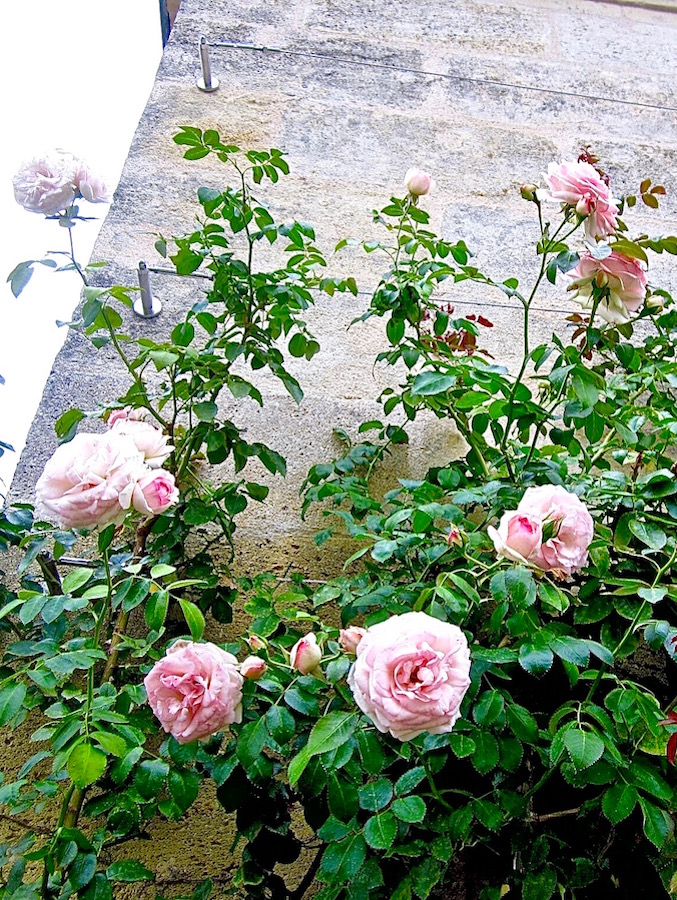

One level below the tank room was the extensive underground barrel cellar where French barriques cradled the aging wine. The artfully displayed barrels were illuminated by the soft glow of stylish, low-hanging pendant lighting. The cellar's beautiful Mashrabiya walls, inspired by traditional Arabic wooden screens, served the dual purpose of concealing machinery and equipment while facilitating ventilation. Standing amidst the barrels, the intimate, elegant space felt more like a chic hotel lobby than what you'd expect to find in a musty wine cellar.
After we toured the cellar's interior we were led up to the rooftop which featured beautiful gardens and panoramic views of the bucolic splendor surrounding the estate. The view also included the vineyards of another world renowned estate, Chateau Pétrus, which is only a stone's throw away in neighboring Pomerol. While the prestigious Chateaux and vast holdings of the Left Bank are certainly very impressive, we were truly smitten with the verdant lush greenery and relaxed charm of the Right Bank.
Finally, we toured the estate's vineyards and were able to walk among its revered vines. As we meandered down the gravel paths we were able to pluck some of the Cabernet Franc grapes straight from the vine. Since it was September just before harvest, the grapes were juicy and perfectly ripe. After we had each sampled a few of the delightful jewels, we were ushered away from the vineyard in order to avoid cutting into their profits!
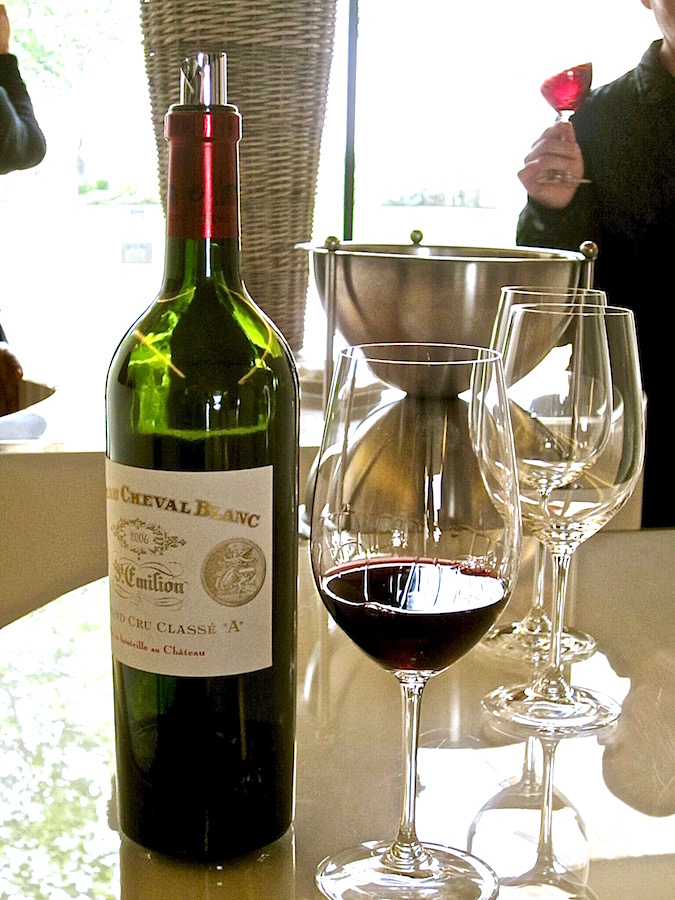
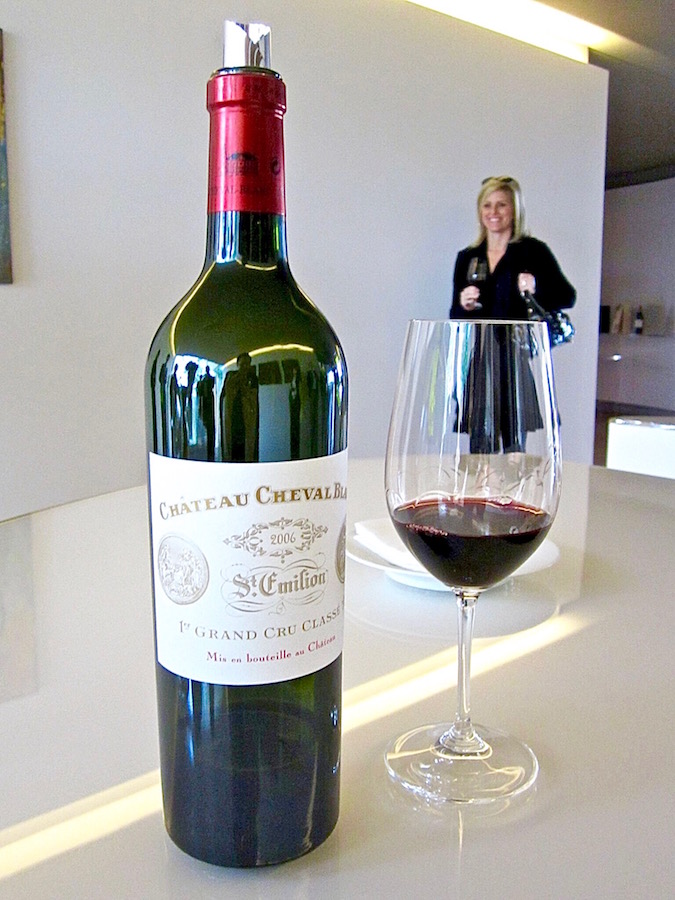
Understandably, the soil types the vines are grown in is particularly important for maintaining the character of the Cheval Blanc wines. While some estates in Saint-Emilion have excellent gravelly soil, and others have very good clay soils, Cheval Blanc is blessed with both types of soil in fairly equal proportions. Château Cheval Blanc is also one of the rare estates whose vineyard configuration has remained practically identical for nearly a century and a half, since 1871. This continuity can also to be found in the proportion of grape varieties. In 1911, the share of Cabernet Franc was also close to 50% just like it is now.
The vineyards at Château Cheval Blanc are planted to three classic Bordeaux grape varieties: 49% Cabernet Franc, 47% Merlot and 4%Cabernet Sauvignon. The average age of the vines is 42 years, but the oldest plots go back to 1920.
Replanting is done at a very slow rate – only one hectare every three years. This means that, year in and year out, the heart of Cheval Blanc's vineyard remains intact. Each vineyard plot has its own specific profile due to the age of the vines, surface area, kind of soil, type of rootstock and grape variety. As a result, the wine produced from each plot has its own unique profile. Those from clay soil are powerful with velvety tannin, while those from gravel soil are more aromatic and elegant. A blend of the two results in a wine that is both powerful and elegant with expressive aromatics as well as the complexity of Bordeaux's greatest wines.
After our fabulous tour of Château ChevalBlanc we sampled the Chateau's 2006 vintage, a blend of 54% Merlot, 45% Cabernet Franc and 1% Cabernet Sauvignon. 2006 was a year which highly favored Merlot, resulting in a wine with rich, ripe, expressive fruit which melded beautifully with the elegance of the Cabernet Franc.
The full-bodied wine was rife with layered notes of violet, cassis, cocoa, leather and cigar box which continued to evolve and mesmerize in the glass. The wine's opulence was balanced by its elegant frame and fine tannins, which demonstrated remarkable balance and poise. We took our glasses up to the rooftop garden to fully savor and indulge in the experience...right down to the very last drop.
Are you a Bordeaux fan? Why or why not and if you are, which bank do YOU prefer, Right or Left? Please let me know in the Comments section below.